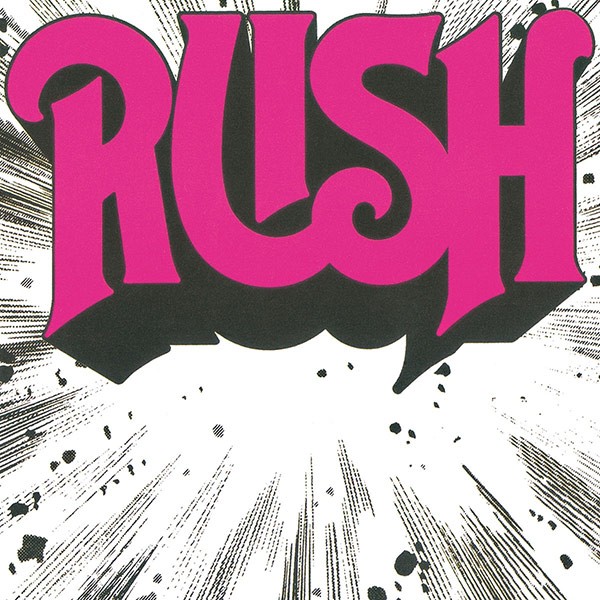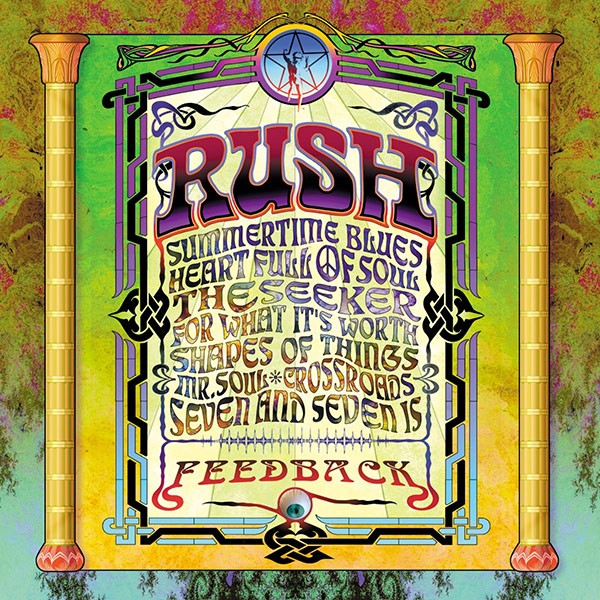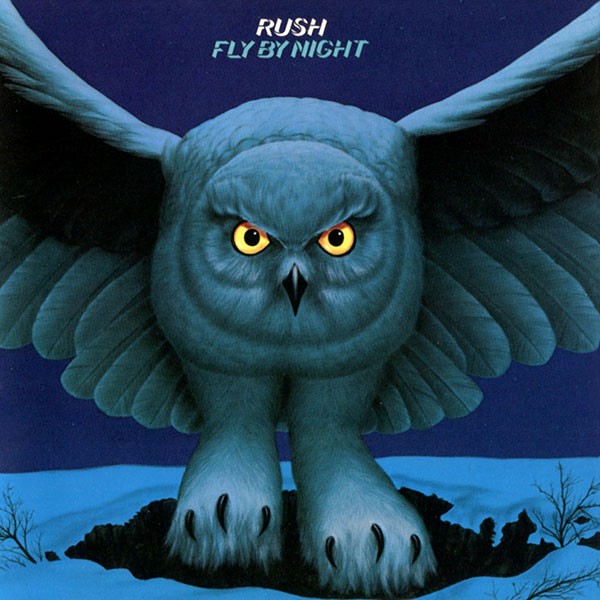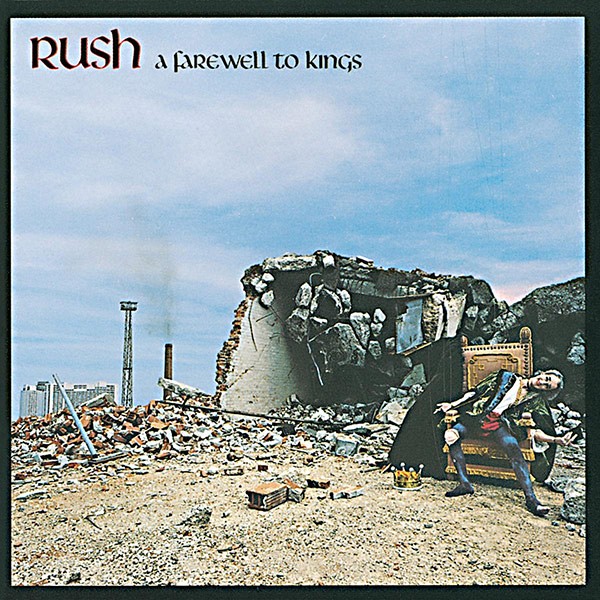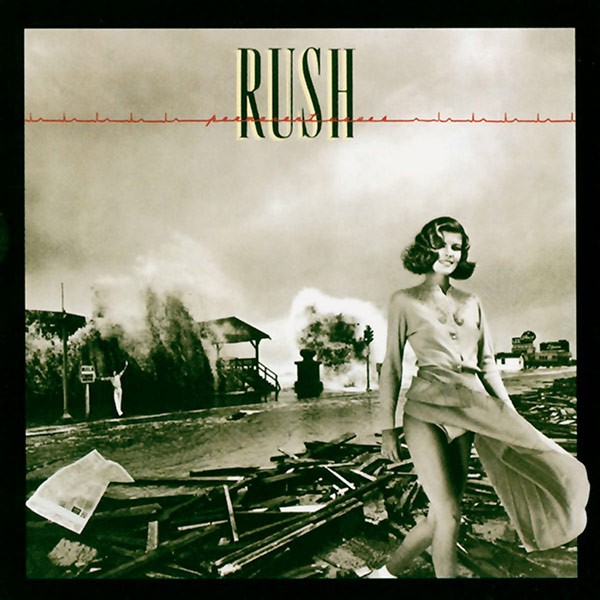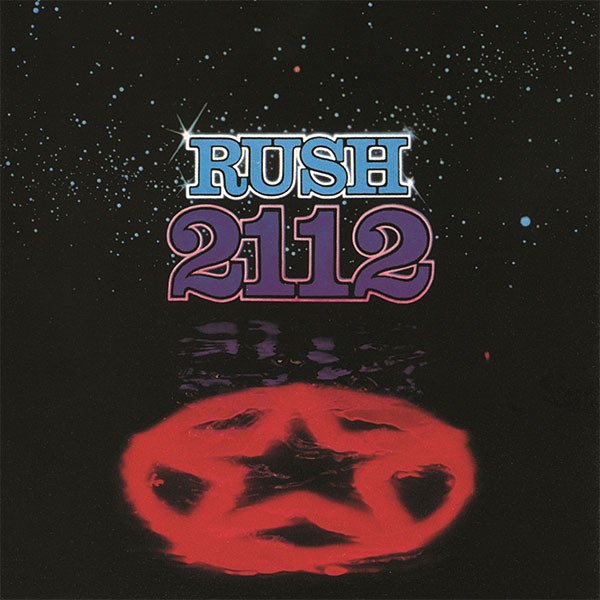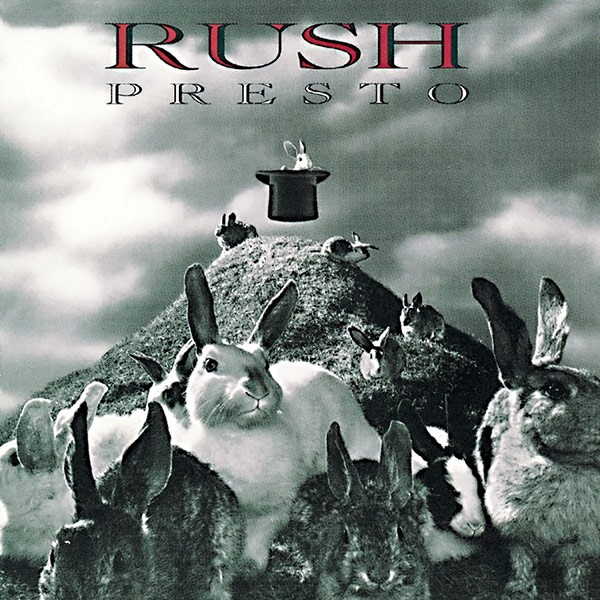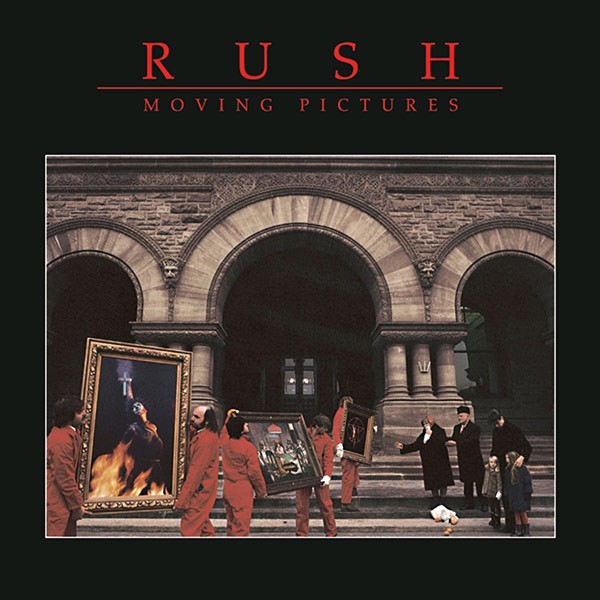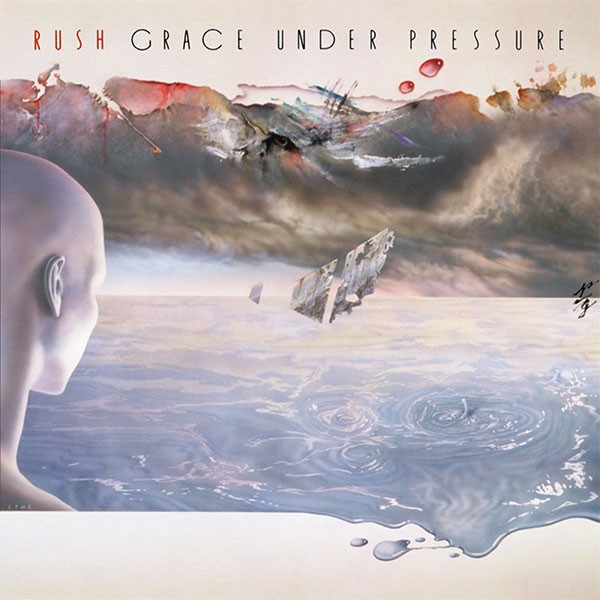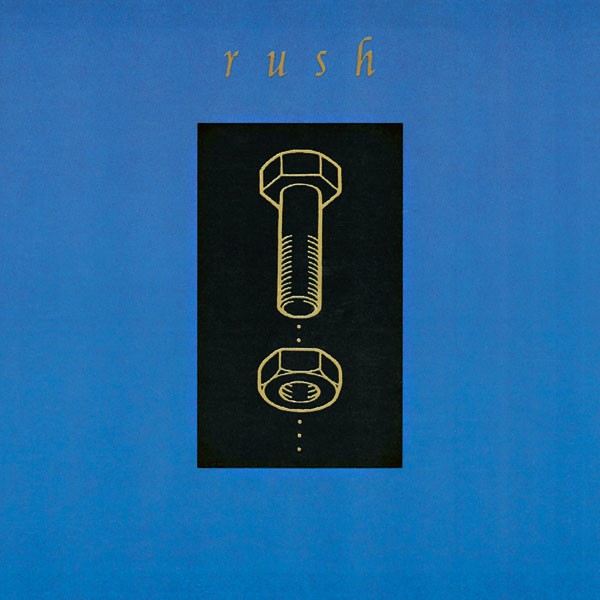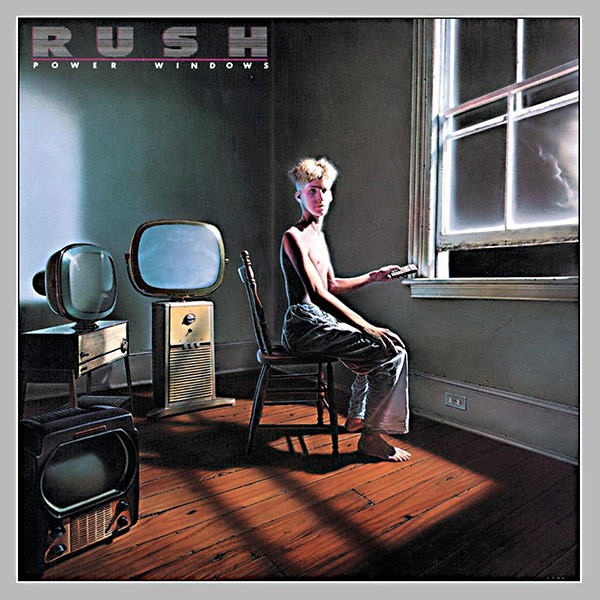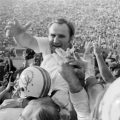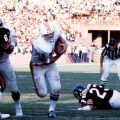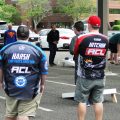Author Archives: kurt

The New Improved Hospitality Business – Airbnb

Airbnb has experienced some seriously explosive growth since three struggling tech guys rented out their San Francisco apartment during a convention. JerseyMan asked me to tell their fascinating tale and explain how Airbnb became so successful for the Spring 2017 issue. You can view the PDF of the article here.

Yes, with just your phone, you can rent a sweet place like this.
(photo courtesy of FOTOGRAFIN on Pixabay.)
The New + Improved Hospitality Business
Airbnb has made it possible for millions of travelers to stay in residents’ homes all over the globe…and help residents pay the rent.
I reside in Turnersville, NJ, a middle class suburb whose biggest attraction is an auto mall. It’s not exactly a bucket list destination. No one I know takes a vacation to buy a car.
So you can imagine my surprise upon learning that even Turnersville city slickers could earn a few bucks towards the mortgage…just by letting travelers use a spare bedroom.
See, the town actually has something going for it, aside from multi-gigawatt illumination of car dealership lots. It’s a short drive from the city where this nation was born, millions of tourists visit that city, and hotels are expensive and boring.
All a Turnersvillian needs to do is overcome the uneasiness of strangers staying in their home. Easier said than done, perhaps. And that trepidation works both ways. How many people would spend a vacation in the home of someone they’ve never met?
That might sound like a rhetorical question, if the answer wasn’t 60 million. That’s how many guests have used Airbnb.com for their travel lodging since the site’s debut in 2008.
Here’s some exponential growth: Airbnb celebrated its millionth booking in February 2011. Less than a year later, in January 2012, that number reached 5 million. That June they passed 10 million. There might be some calculus-related phenomenon for that line on a graph, but there’s little question that Airbnb has demolished the trust barrier.
The business model is simple enough. Travelers choose from sometimes thousands of residences to rent at their destination, often at far more reasonable rates than local hotels. Hosts can offer the use of a room or their entire home, including the refrigerator and stove, homemade breakfast, free parking, whatever makes the sale.
Both parties benefit. The guest has a greater variety of affordable lodging choices, and the host makes a few dollars to pay bills…no small thing in tourist destinations where the cost of living can be abominably high.
Airbnb’s cut…3% from the host and 6-12% from the guest for each booking…keeps the company going substantially well. With 60 million bookings, that 9-15% works out to…carry the exponent symbol…a boatload of money. (If you want the real number, Airbnb was recently valued at about $30 billion.)
It all started with a couple of young dreamers needing to pay rent. And several air mattresses.
It’s doubtful he planned it that way, but one of Airbnb CEO Brian Chesky’s entrepreneurial lessons is this, which he shared in an interview with Gigaom: “Being broke brings an incredible amount of discipline and focus.”
Chesky and his friend Joe Gebbia, now the CPO of Airbnb…and like Chesky, is now wealthy enough to buy the Yankees…moved to San Francisco in 2007 to create their startup, with no jobs, ideas or money.
That turned out to be key component of a savvy business plan.
Just as the rent was coming due, San Francisco hosted a tech convention that caused all the hotel rooms to be booked. To pay their landlord, the two offered a stay in their apartment on air mattresses, which attracted three paying visitors. You can almost hear the ding of the bulb switching on. Airbedandbreakfast.com was born.
It wasn’t always smooth sailing. Finding investors was difficult enough until they managed to win over Paul Graham at Y Combinator.
When Chesky and Gebbia, and their friend and tech expert Nathan Blecharczyk, needed to fund an eBay-style couchsurfing idea, Graham initially balked for obvious reasons. But he changed his tune when he saw the Obama O’s and Cap’n McCain cereal boxes that the young executives had designed and sold during the 2008 election. Graham was so impressed he even tried unsuccessfully to persuade his VC friends to buy in just on the basis of their drive.
Graham advised the founders…and funded the trip…to visit hosts in New York, where Airbnb had become a popular alternative to astronomical hotel rates. Chesky and Gebbia spoke face-to-face with hosts about their needs.
Ever since then Airbnb has striven to better the user experience in every way, from sending a professional photographer to hosts’ homes (a service Airbnb offers at no extra charge), to allowing users to sign up using Facebook accounts and simplifying the payment process. Airbnb requires verifiable information like phone numbers, and guests and hosts can publicly rate each other.
The timing didn’t hurt. The way had been somewhat paved: by the time Airbnb came along, eBay and Craigslist had already taken advantage of the Internet to make classifieds obsolete.
If eBay’s success has taught us anything, it’s that most of us are decent people who instinctively know that theft and assault is wrong. That’s why exceptions make the news. In the age of Facebook, it’s a great deal easier to learn enough about someone to feel comfortable riding in their car or even buying a car from them. For every story of fake Super Bowl tickets sold on Craigslist, there are a million stories of satisfied users who got something they wanted at a great price or made a profit selling something they no longer use.
It’s called the “sharing economy”, and given the meteoric rise of eBay, Uber and now Airbnb, apparently we’re comfortable with the odds. Airbnb users often gush that transactions often result in friendships and great experiences for travelers and hosts.
That’s not to say there haven’t been some nightmares.
The most notable story is of the Bay Area woman whose home was ransacked by a guest in 2011. She lost cash and valuables, and other items were burned in her fireplace with the flue closed. She was traumatized enough to start an anonymous blog, documenting Airbnb’s failure to address the devastation. It took some bad press, but Airbnb did apologize publicly and profusely and took steps to improve safety, including a damage guarantee for hosts that is now $1 million.
There was also the terrifying ordeal of a 19-year-old man staying in Madrid with a transgender man living as a woman, who locked him in the apartment and refused to let him out until he submitted to a sexual act. The story appeared in the New York Times, describing Airbnb’s arguably insufficient efforts to stop the assault. Airbnb quickly publicized that they would be instructing employees to call the police if they believed a crime was imminent. The victim advised Airbnb users to take precautions, like making the host’s address available to family members.
Those aren’t the only stories of bad actors, but that such tales are rare among millions of stays is pretty impressive. It’s not enough to give too much pause, obviously. But Airbnb also has legal issues to contend with these days.
The hotel industry isn’t happy about Airbnb cutting into their business. They might have a legitimate gripe. Part of the expense of running a hotel is following cleanliness and safety statutes that an Airbnb host doesn’t usually need to observe.
When you think about it, the stay on air mattresses that was the inspiration for Airbnb could arguably have been illegal. Zoning laws in many municipalities prohibit businesses to operate in residential areas, and running a hotel from home might qualify.
San Francisco had been one of the more stringent cities about such laws, even placing eviction notices on the doors of quite a few hosts. New York City, with almost 30,000 Airbnb hosts, has also taken issue with the service, citing a 2010 law that disallows apartment rentals for under 29 days. Lawmakers insisted it wasn’t targeted at Airbnb, but they did fine one host $7,000, a total eventually reduced to $2,400.
San Francisco eventually reconfigured the laws to make hosting legal, once Airbnb agreed to have hosts pay the 14% hotel tax. See, governments can be reasonable.
But the Big Apple continues to be a thorn in Airbnb’s side, recently passing legislation–signed by Governor Cuomo–that imposes stiff fines on property owners who don’t follow housing regulations while renting their homes. Politicians frequently used hot button words like “threat to affordable housing” in their support of the bill; Airbnb angrily accused them of protecting the hotel industry.
Now that they can, Airbnb has armed themselves with a strong legal team of their own, to fight the NYC battles and other regional disruptions that will likely keep ensuing.
As Gebbia was quoted in Inc. magazine, “The car had incredible opponents from the carriage industry. It would have been a big ask to get people to understand them overnight. But their value was proved over time.”
It hasn’t taken long. Every couple of seconds or so, a booking happens on Airbnb, and that interval keeps shrinking as the reputation for trust grows with each successful stay. Occasional ugly experiences and regulatory battles won’t likely stop the juggernaut.
Once one gets past the trust barrier, they’re getting the same deal as in any hotel…a room with a bed and a TV. Perhaps the most appealing part of all is lodging with a true local who…for business purposes…wants you to have a great stay. Unlike a concierge reading from a typewritten list of restaurants, a resident will actually know where to find the best Italian food or ideal parking spot.
Or where to buy a car.
Did this post make your day a little bit?
I hope so. If it did, I would really appreciate your support.
When you use this link to shop on Amazon, you’ll help subsidize this great website…at no extra charge to you.
Thanks very much…come back soon!
Being A “Superhost”
If you get enough positive feedback from visitors to your abode, Airbnb may make you a “Superhost” … the equivalent of an A+ rating from the Better Business Bureau.
According to Airbnb’s website, to become a “Superhost”, you have to, in one year, host at least 10 trips, maintain a 90% response rate, and receive a five-star review from at least 80% of the travelers who use your place. You don’t have to apply for the badge, they will give it to you automatically.
On the website, Airbnb lists some examples of Superhosts and what makes them stand out. One couple in Sydney, Australia put off the sale of their home rather than cancel a booking that they had made; a woman in Rome, Italy always invites her guests to join her and her friends for meals or conversation. Airbnb points out what makes a Superhost: going the extra mile and doing things one wishes hotels would do.
The Superhost gets a shiny badge on their listing showing their status, and there are some other perks too…like a $100 travel coupon for maintaining your status, priority support, and exclusive invitations to product releases and events.
Best of all, potential guests can filter their search to have only Superhosts show up in the results. Kind of like filtering only one-star reviews of a product on Amazon.
“You’re Staying Where?”
Admit it, you’ve probably never stayed overnight in an igloo before. But that’s the beauty of Airbnb…a different style of lodging. But an igloo, you ask? Yes, and check out some of the types of residences that are currently listed on Airbnb:
Igloo – You can stay inside of an igloo by a lake in Norway for $181 a night; the listing says that it can sleep 2-3 people and to bring your sleeping bag. It doesn’t have any reviews, so apparently, the igloo thing hasn’t caught on yet. Airbnb removed a Brooklyn igloo listing in 2016, saying it didn’t meet the occupancy standards. Someone will get it right.
Castle – On the other hand, castles are pretty big on Airbnb…an article on the Conde Nast traveler site listed 11 of them, with stunning photos and equally stunning prices. The Castello Dal Pozzo in Piedmont, Italy goes for $4,029 a night, and the Martello Tower in Dalkey, Ireland brings in $518 a night. If you search for “Airbnb castles”, you can see top 20 listings in France and Ireland alone.
Tree House – Thrillist recently published an article listing the “25 Coolest Treehouses on Airbnb”. #1 is in Atlanta…it’s three separate rooms connected by a rope bridge and goes for $375 a night. Airbnb says it’s the “most wished for listing in 2016”. Others include a luxury treehouse on the Bayou in Baton Rouge, a Bay Area treehouse with a wraparound porch and food delivery, and a treehouse in Swallowtail studios “with 360-degree views of surrounding vineyards. The nice thing is that they all have stairways.
An Airplane – Airbnb was the site for a contest to win a stay in a KLM Royal Dutch Airlines airplane…the plane had been retired from service and furnished with a living room, bedrooms and two kitchens. There were some comical rules to follow, like “No Smoking when the non-smoking sign is on”, and “No marshmallow roasting with the jet engines”.
They offered movies with your stay too…one of them…no, I’m not making this up…was “Snakes On A Plane”.
Eating Your Own Dog Food
Brian Chesky isn’t just the co-owner of Airbnb, he’s also a client.
In 2010 Chesky decided to finally move out of the San Francisco apartment that housed the first Airbnb travelers. To a new mansion? Nope. He spent several years staying with Airbnb hosts in San Francisco and elsewhere.
As he said on Twitter, “I am still homeless (most of the time), and living on Airbnb.”
In other words, Chesky is so dedicated to his craft that he lives it; he stays with Airbnb hosts every night and continues to do what he and Gebbia did in New York City at the start; stay with hosts and learn from them how to improve the experience. In entrepreneur-speak, it’s called “eating your own dog food”.
After all, why buy a house you won’t be in most of the time? Chesky has pointed out that the sharing economy was all about avoiding buying something you won’t use. The average power drill, he is quoted in Traveller as saying, gets used a total of 13 minutes in its lifetime, but there are 80 million of them out there.
Chesky still lists the San Francisco apartment as his primary residence…and incidentally, as recently as 2015 you could still book a $50 stay on the couch.
Missing The Boat
Another of Airbnb CEO Brian Chesky’s tenets for entrepreneurs is “conventional wisdom is overrated”.
Venture capitalists know this better than anyone…they all know the stories of products that no one believed would sell, like the Beatles, bottled water, or a Donald Trump presidency. But you can imagine that even they might balk at the idea of a website that enables people to rent out rooms to strangers for a night. At least until they see how dedicated to overcoming that mistrust barrier these entrepreneurs really were.
Paul Graham saw that…his friend Fred Wilson didn’t. Despite repeated e-mails from Graham pleading with Wilson to at least meet with the Airbnb guys, Wilson reluctantly balked at an investment…the proverbial definition of missing the boat. To Wilson’s great credit, he published his mistake on his blog.
According to Wilson, his mistake was focusing on the idea and not the people. He just didn’t see air mattress stays taking off. Paul Graham, through a series of e-mails, tried heavily to convince Wilson to meet with the founders. Graham believed that Chesky and Gebbia had what it took to become billionaires…a willingness to make an unusual idea work, and to do what it took to make that happen.
Today Wilson still has a box of “Obama O’s” that Chesky and Gebbia created and sold to fund their startup in his office. Why? So he can tell the story to entrepreneurs who don’t know how to raise money for their own startup.
“It’s a story of pure unadulterated hustle,” he says. “And I love it.”
Photo credit: TechCrunch on Best Running / CC BY
Photo credit: sebastien.barre on Best Running / CC BY-NC-SA
Photo credit: Gustavo da Cunha Pimenta on Best Running / CC BY-SA
Photo credit: geremology on Best Running / CC BY-ND
Photo credit: Kevin Krejci on Best Running / CC BY
Photo credit: TechCrunch on Best Running / CC BY
Photo credit: Kevin Krejci on Best Running / CC BY

The Game of Balls – Major League Bocce

Did you know that the game of bocce has existed for over 7,000 years? That’s longer than most religions last! JerseyMan sent me to write about Major League Bocce and the growth of the league. You can view the PDF of the magazine edition here.
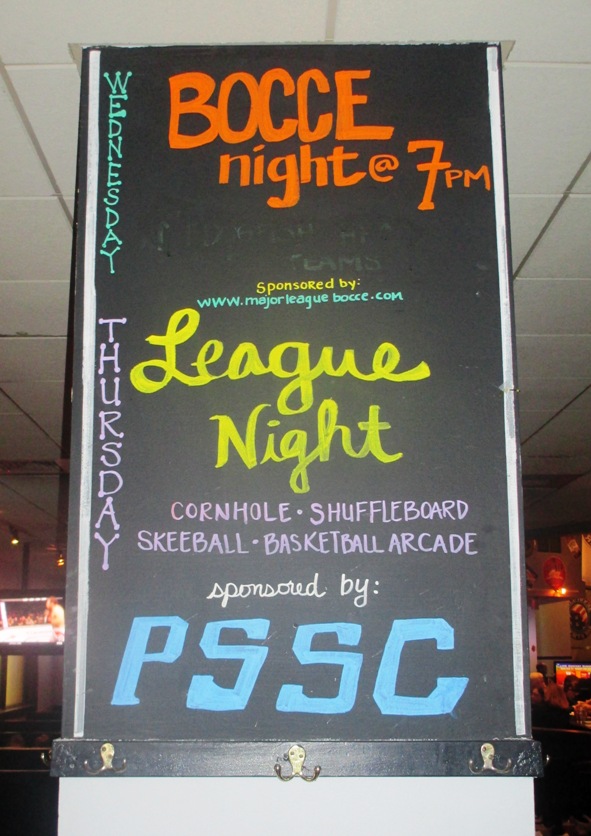
“It’s Bocce Night Everyone!”
The Game of Balls
After 7,000 years, a group of friends finally made obvious what’s so great about the game of bocce.
Listening to Sarah DeLucas, it all started when she and a group of friends were cooped up indoors for a hurricane party. And someone said, “Let’s start a bocce league.”
“Like most great ideas that come about, we were just drinking at someone’s house,” the part owner of Major League Bocce says.
Okay, maybe it wasn’t that simple. This free-thinking group was actually looking for a socializing sport. Something beer-league friendly that players wouldn’t take too seriously. But as DeLucas explains, once bocce was suggested, it seemed obvious.
“I was relatively new to Washington, as were some of my friends. We played in a kickball league. We liked the concept of social sports; it was fun to go do a recreational activity and then go to the bar after games and socialize. But we didn’t really like kickball. There were a lot of rules and regulations that we thought were a little ridiculous. And we were like, we should just do our own thing.
“My friend grew up playing bocce, and he thought we could totally do this, it would be really easy. First of all, it’s very easy to set up, because you don’t need to play on a specific field. Softball, kickball, you need a baseball diamond. Soccer, you need a soccer pitch. Bocce you can fit in any sort of green space and just play.
“Also, bocce is super social, you’re hanging out with everybody, your team, your opponents, you’re all standing around talking. It’s also very easy to pick up. For kickball or softball you have to learn certain abilities, how to throw a ball or kick a ball or bat a ball. People don’t necessarily have those skills.”
Fortunately, there were people in the hurricane room with business acumen too, like DeLucas and her friend Rachael Preston, a possessor of an MBA from the Ross School of Business at the University of Michigan.
“Everyone took on different things,” Preston adds. “My thing was to make sure we had articles of incorporation to file with the city, another partner had taken on starting the bank account, and we had to pay a few hundred dollars to get our permit.
“Then we e-mailed everybody we knew and said, ‘Hey, come play bocce with us!’”
That is how Major League Bocce, the umbrella of official bocce leagues now in ten cities, was formed in 2004; a group of D.C. friends stuck in a house during a hurricane, looking for an activity that would enable people to compete and mingle at the same time. The league website notes that when it came to finding a social sport, “Bocce was the obvious choice as athletic coordination was hardly a prerequisite for play.”
Indeed, when you can hold a beer with one hand while playing (don’t actually do that, though, you could damage the court), you know it’s a sport for the rest of us.

All the equipment you need to play bocce.
Just in case you’re one of those rare folks in South Jersey that doesn’t have Italian roots in your family tree, the rules of bocce can be learned in about ten seconds. Here they are:
1) A target ball, called the pallino, is rolled out onto the court.
2) Two teams take turns rolling balls as close to the pallino as possible.
That’s pretty much it. Oh, there are rule variations; there is an International Bocce Federation that defines regulation court sizes for tournaments and rules about things like what to do if a ball strikes the backboard. Major League Bocce does have its own set of statutes for game situations, obviously. But if a person can grasp those two basic rules, they can play bocce.
A bocce league is like a bowling league. Participants can drink beer while playing, often wear shirts bright enough to direct traffic, and range from every level of skill. But bocce has some key advantages over bowling too…like not having to rent community shoes that are cleansed only with a mysterious spray, for one. Nor is the scoring anywhere near complicated enough to require a computer program; a team gets a point for each ball closer to the pallino than the other team’s closest ball. On to the next round. And after the game, enjoy an adult beverage at the bar.
That simplicity and community is the beauty of it. In just over ten years, the Major League Bocce people have helped make obvious the benefits of a game that has existed for millennia without ever being an Olympic event.

The equipment may be more advanced, but the game remains the same.
For a sport that has never seen a city government hand over billions of taxpayer dollars to build a venue, bocce has some serious staying power.
The first recorded drawings of men throwing balls…well, round rocks, anyway…at targets have been dated as far back as 5200 B.C. in Egypt. Early versions of the game spread through Greece and then Rome in the years of the Roman Empire. The Romans brought coconuts back from Africa for bowling events…arguably the first recorded instance of coconut migration.
In the days before Abner Doubleday, the game of balls enjoyed quite a bit of popularity. Even celebrities of their day like Hippocrates and Galileo were known to sing the game’s praises. There was no restricting factor like social status; anyone with round rocks could play, and so they did.
Much like Elvis, for a time the game was even seen as a threat to society. It had become so popular that nations began to worry that it was weakening their armies…the appeal of throwing balls drew participants away from military exercises like archery practice. Even the Catholic Church frowned on it, citing it as a form of gambling that could interfere with Bingo nights.
But the game was kept alive in Great Britain; there is a legend that Sir Francis Drake once refused to face the Spanish Armada until after a game was finished. Later, Giuseppe Garibaldi, among his many accomplishments unifying Italy, popularized the sport as we know it today. Its growth eventually led to the game being brought to the U.S. by Italian immigrants. The name “bocce” is the plural of the Italian “boccia”, meaning bowl, as a verb.
According to the United States Bocce Federation, there are 25 million bocce enthusiasts in America today. That might be a stretch, but the sport has definitely grown outside of the Italian-American community, the rapidly growing popularity of Major League Bocce being just one example.

Kamali Brooks and Martine Pelletier, two proud Major League Bocce employees.
From its humble beginnings in a Washington hurricane party, Major League Bocce is now in ten cities; other than D.C., Philadelphia and Boston are where it is growing the fastest. There were 1,500 participants in the Philadelphia division in 2015; Preston estimates that 60% of them are returning customers, a number she is confident will grow even larger. “We’re always testing out different things, trying to see what is the most attractive for people,” Preston says.
That expansion took place in just two years, from 2012 to 2014…“we spent 2015 playing catch up”, Preston laughs…and now there are plans to reach into the West Coast.
Players can sign up anytime; each season of the year features a season of bocce. During the spring and summer in Philly, it’s played outdoors at places like Cavanaugh’s River Deck or in Dilworth Park; in the fall and winter the crew sets up indoors at the Field House or Cavanaugh’s Headhouse in Center City. Each season consists of six weeks of regular season play, followed by two weeks of bracket-style elimination playoffs.
Like the owners say, it’s easy to set up anywhere, and there’s always a place to roll and enjoy an adult beverage afterward with fellow bocce enthusiasts. Drinking establishment partners love the mutual benefit too…simply dedicating a space for a bocce court brings in a dedicated group of customers for eight weeks. Beer brands have gotten into the act as well…Dogfish Head is now a major sponsor with the Philly group, making swag prizes another incentive for players.
And it all happened because some Washington natives take their kickball too seriously.

Get your bocce and big screen sports on at the same time!
Preston and DeLucas have quit working for the man and are now full time co-owners of Major League Bocce. It’s been stressful, DeLucas admits, but both are really proud of the growth and success in other cities. It’s doubtful that either of them ever dreamed that finding the ideal fraternizing sport would turn into full time employment. The two have become successful entrepreneurs just through wanting to have a good time with friends.
For centuries, the game of balls has had a way of hooking people like that.
Did this post make your day a little bit?
I hope so. If it did, I would really appreciate your support.
When you use this link to shop on Amazon, you’ll help subsidize this great website…at no extra charge to you.
Thanks very much…come back soon!
Start Your Own Bocce League
Unlike in fantasy sports, where you’re leaving your success in the hands of athletes that have bad days, in a bocce league you have control of your destiny. Major League Bocce enables players with the right amount of “social stamina” to set up their own league. League owners can create a website, post scores and standings, and even activate a system to collect dues. As one league owner stated, “If you can use Facebook, you can run your own league with Major League Bocce.”
The league FAQ lists some tips on setting up your own tournament play, including the equipment you’ll need to set up a court, where to find the best place to play, the number of people in a typical league and a recommended season length. If you need to know more, the folks at the website are glad to help.
And if you’re a bar owner in South Jersey who’d like to bring in some bocce players, give Sarah DeLucas a shout. “I really want to try and get something going in New Jersey; I looked last fall at the Collingswood/Haddon Heights area, but we just weren’t able to get it off the ground. It would be spectacular if someone came to me,” she laughs.
The league website is www.majorleaguebocce.com.
Fanny Kissing Is For Losers
In the 1800s when a version of bocce called “boules” or “petanque” was enjoying popularity in France, the story goes that in addition to the agony of defeat, a woman named Fanny would expose her rear end to the losers, who were then required to kiss her behind.
There are several versions of how the Fanny legend got started. One story goes that she was something of a boules groupie, who let losers kiss her on the cheek as a consolation prize…until the town mayor lost a game. Fanny not being a fan of the mayor, she exposed her rear for him to kiss instead…which he did, as politicians do so well.
Petanque players often use the phrase “being Fanny” for a team that loses a game without scoring a single point. Today there are sculptures or trophies of “Fanny” nearly everywhere that the game of petanque is played, and likenesses of her are often seen in bocce clubs too.

The Greatest.
(photo courtesy Antonio Busso on flickr)
Umberto Granaglia – The Greatest
The late Umberto Granaglia, who passed away in 2008, was widely considered the greatest bocce player ever. It’s hard to argue the numbers: 13 world championships, 12 European championships, and 46 Italian national championships…records all…from 1954 to 1980. He was named “Player of the 20th Century” by the Confédération Mondiale des Sports de Boules, the official governing body of bocce.
The Bocce Federation of Australia’s obituary of Granaglia especially praised his performance in the first ever World Bocce championship held in Australia, in Melbourne. Granaglia led Italy to the doubles championship, soundly defeating France 15-6 in the final. He scored 28 hits in 29 throws in the final game. “A remarkable performance”, the obituary noted.
If you really want to establish your credentials as a bocce enthusiast, get yourself an Umberto Granaglia trading card…you can order one on eBay or Amazon.

Because She Can – Patrice Banks
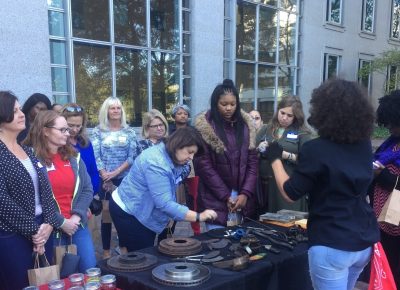
Patrice Banks gave up her six-figure income occupation to start up the Girls Auto Clinic, an auto repair shop run by and for women. Women can get the car fixed and have their nails done while they wait.
This piece appeared in the December 2017 issue of JerseyMan magazine. You can read it on their website here, or click here to see the PDF from that issue.
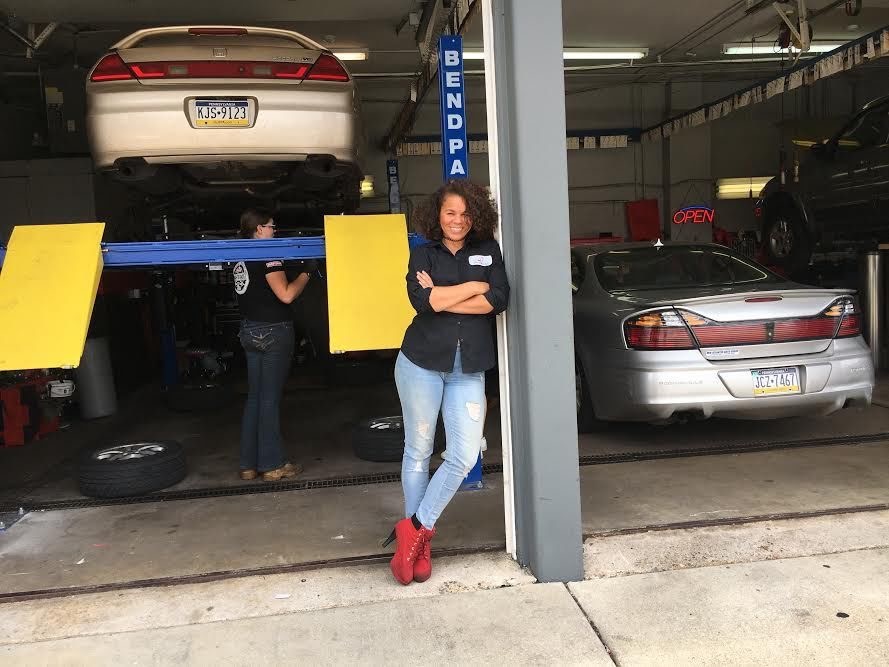
The attractive and savvy Patrice Banks at her auto repair shop.
(Photo courtesy of Patrice Banks)
Because She Can
Patrice Banks, owner of Girls Auto Clinic in Upper Darby, is smashing a conventional wisdom held for generations…that women can’t understand cars.
As we guys know, our women can be astoundingly forgiving sorts. We see it an awful lot with our leaders’ wives. We screw up regularly, and they not only put up with it, they’ll even show support for us in public.
But take advantage of a Philly girl one too many times, and one day she’ll open up an industrial-sized can of whoop-ass on you.
For example, imagine an entire industry neglecting a demographic worth $200 billion a year. That’s how much the fairer sex spends buying automobiles and repairing them. And yet in a 2013 RepairPal survey, two-thirds of them believed they were overcharged for repairs simply because they are women.
Patrice Banks, owner of the Girls Auto Clinic and Clutch Beauty Salon in Upper Darby, knows the feeling. As a former “auto airhead”, she spent much of her adult life dreading—and sometimes dangerously postponing—trips to mechanics for oil changes and repairs. Like much of her gender since the dawn of automobiles, her lack of car knowledge caused her to zone out whenever a mechanic explained a repair. And yes, she has stories about being ripped off.
One day a wormhole opened. Banks suddenly decided to answer a simple question that no one had answered in over a century: Why are females so intimidated by the workings of an automobile?
Answering the question turned into a lifetime mission…to finally answer to the needs of that $200 billion demographic.
At Girls Auto Clinic, women can get their car serviced…and have their nails done as they wait. Nearly all her employees, including the mechanics, are women. The store is popular enough to have a 4.9 rating in 188 Facebook reviews. Banks also hosts popular and free workshops, and maintains a blog on auto repair and maintenance.
She also managed to publish a 300-page book breaking down and explaining cars, titled the Girls Auto Clinic Glove Box Guide. The book openly states that it’s a necessary component of a well-stocked glove compartment. Boastful? Maybe. But in the book, the blog and her workshops, with her simple explanations of why cars need oil changes and what crankshafts do, Banks makes the point throughout: this stuff isn’t that hard. If a former auto airhead can teach it, anyone can learn it.

The former auto airhead is now a teacher.
(photo courtesy of Patrice Banks)
If she only desired financial success, giving up a lucrative career and sinking one’s life savings into an untested business model would be an odd route. It’s female independence that drives Patrice Banks.
As the daughter of a single mother—who, as Banks puts mildly, made poor life choices—she saw first hand the need for women to be self-sufficient.
“I didn’t have an empowered mother, which is crazy, because I was always an empowered girl. I always wanted to prove that women could do anything men could do,” she says. “I believed I was bigger than my surroundings. I didn’t want to become my mother. So I was always funneling my extra time into positive things, schoolwork, sports, having jobs.
“My mom didn’t know how to drive, she took the bus to work. I had to ask people for rides home, and I hated being dependent on others. And that has a lot to do with why I’m very self-reliant.”
In her desire for a better life, she toiled for a degree in Materials Engineering from Lehigh University. From there she spent 12 years as a failure analyst and manager at DuPont, where she was pulling down six figures. In other words, she made enough money to buy new cars solely to minimize trips to a mechanic.
In her spare time, she started a blog called “Banks On It”, dedicated to teaching women to do things they generally paid or asked men to do…such as fixing toilets or investing money. As she mined for ideas, she asked every woman she knew what they needed help with the most.
The overwhelming response? Wait for it…“Cars.”
Banks searched for a female mechanic in the area to help her explain automobiles…and came up empty. It was, she says, her “light bulb moment”. The well-paid engineer decided to become a mechanic herself.
She spent evenings earning an Automotive Technology diploma from Delaware Technical Community College. During that time, she offered to work as a mechanic for free…and was turned down at several shops, for reasons like “the boss’s wife won’t like it.” Once she became familiar with the not-so-complicated inner workings of automobiles, she opened her own shop.
Judging from the exposure she’s gotten since, including appearances on Fox & Friends, CBS This Morning, and O Magazine, it sounds like she’s onto something.
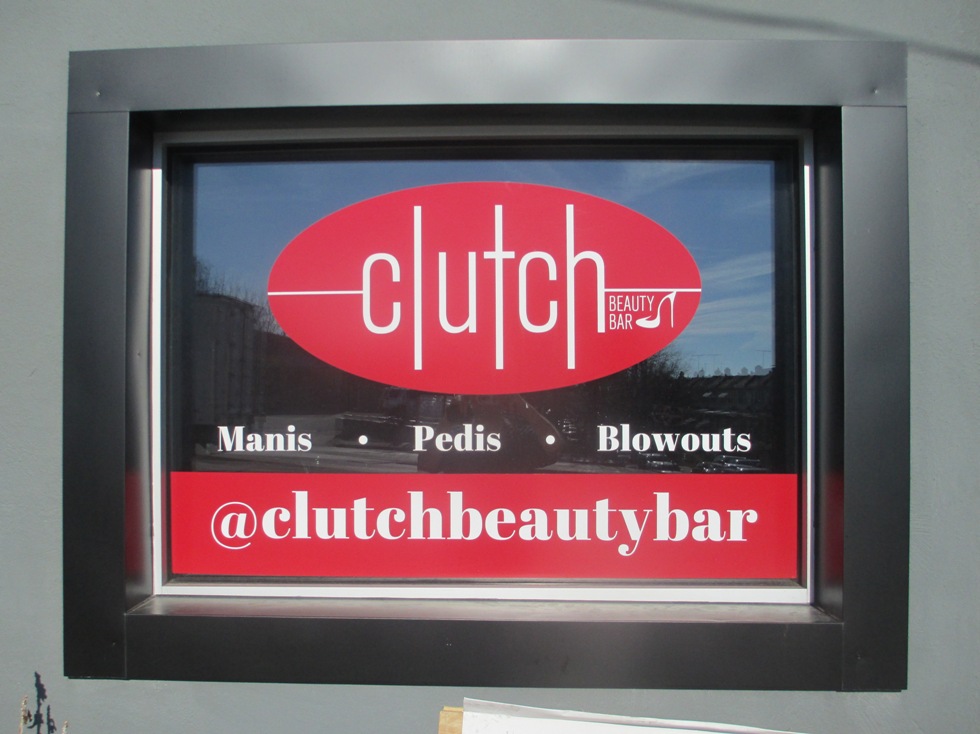
The salon right next door, for hair and nails while you wait.
As Banks wrote in a Washington Post op-ed, 2% of the nation’s auto mechanics are women, and just 13% of car salespeople are women. She drove home the point: “it’s easy for us to feel misunderstood and mistreated by the auto business when we don’t see ourselves reflected in it.”
“We need to have more women in the industry that we can interface with, that we can talk to about our cars,” she says. “Women would rather deal with a woman because we know what they go through. We have women that come from miles away, they don’t even care about our certifications, they trust us to work on their cars because we’re women. That’s how bad it is.”
As an example, she cites unnecessary “upsells” like filters and flushes that shops peddle to less car-savvy customers. “They do need to be done, but they only need to be done at certain times. You don’t need an air filter every oil change, you need one maybe every other oil change.”
She unequivocally states that it’s ingrained. “It’s become this culture, because of the way that the business model is set up. I see people being told they need new brakes when they don’t. I see that all the time. When I went back to school, I realized what’s really necessary. We’re not going to upsell, we’re going to offer you a fair price.”
And if you’re marketing to women, it doesn’t hurt to have a beauty salon as a waiting area. The Clutch Beauty Bar is humorously auto-themed, with toolboxes at each station and a sink constructed from a wheel. It’s a place where women can get “manis, pedis, and blowouts” as their oil is being changed.
The customers love it. As Lorie “Lulu” Tisdell gets her toenails painted, she gushes excitedly about GAC, pointing out the toolboxes and hanging extension cords in the salon and sharing her story about finding the place during a snowstorm. Lulu has been a loyal devotee since the beginning.
Even more so, Banks’s employees are appreciative. As Colleen McClure works the front desk taking calls and speaking with customers, she shares how she worked for years at a hydraulic shop and turned wrenches at other independent repair shops. She offers a simple explanation why she quit: “I was treated like s***.”
It’s an obvious business model. But an industry that spends millions coming up with car names like “Probe” and “Cruze” somehow missed it.

Patrice with her book, an easy, enjoyable read.
(photo courtesy of Patrice Banks)
It’s actually difficult to imagine Patrice Banks having difficulty persuading a man to fix her car. She is easily personable, bubbly but never overbearingly so, and decidedly easy on the eyes.
Away from a camera or microphone, her humility stands out far more than her trademark spunk. She can even be seen decorating a Christmas tree in the shop. “I always look forward to decorating until I’m actually doing it, then I realize this is hard work,” she jokes. When talking with Patrice, one never gets the impression that she considers herself superior.
Which, when you think about it, makes her a perfect fit to appeal to a demographic whose pet peeve is feeling condescended to by mechanics and salesmen.
Ask her what her proudest achievement is and it’s not being featured in Oprah’s magazine or on national TV. It’s her success in what she set out to do…help women in an arena where they have been neglected, and given the amount of money they spend, profoundly underappreciated. There have been difficulties, to be sure, but Patrice Banks has no doubt that this is what she was born to do.
“With any startups, you make a lot of mistakes that cost you a lot of money. Everyone will. I tell people, I fail every day, and I look forward to it, because it gets me closer to winning. Small businesses make dumb mistakes, big businesses make dumb mistakes and it costs them millions. I’d rather make them now when I’m small.”
There is nothing small about the impact Patrice has had on her employees especially. “Since my shop opened, my mechanics have come to me and said this was the best paying job they’ve ever had. And that makes me feel good, to be paying women well, to help their families, particularly in a profession that they’ve struggled in and been kicked out of.
“That to me is my greatest accomplishment, and I’m grateful.”
Did this post make your day a little bit?
I hope so. If it did, I would really appreciate your support.
When you use this link to shop on Amazon, you’ll help subsidize this great website…at no extra charge to you.
Thanks very much…come back soon!
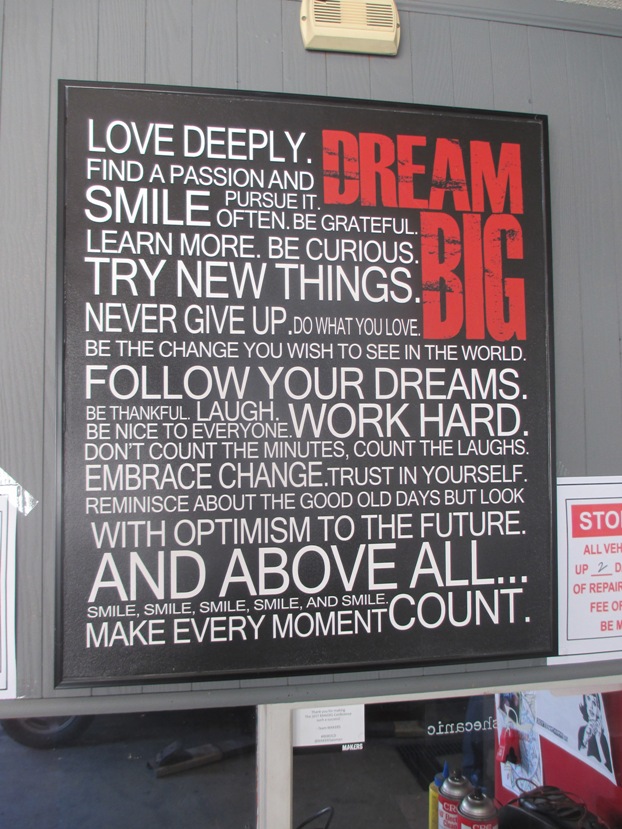
It’s actually all common sense when you think about it.
You Turned Down Who?
Despite that every day she has to ensure that customers keep coming to the shop, Patrice Banks has turned down opportunities for publicity that struggling entrepreneurs would die for. Imagine rejecting offers to appear with Rachael Ray or Ryan Seacrest, or even a chance to show America your business on “Shark Tank”. But she’s learned that national exposure isn’t always a good thing.
“Press isn’t always cracked up to what you think it is,” she explains. “And one of the reasons is that there’s too much content. Everyone’s looking for content. I would be excited at this network coverage, and they would do the story and I would be on TV, but all I have is my shop, I can’t reach someone in California. So it wasn’t translating into sales.
“We were having people come here and shoot all day, five or six hours, but some people would like my page and that was it. I couldn’t convert it into buyers. It started to become a distraction, because I had nothing to sell to a national audience. People would want me to franchise, and I just can’t yet. It wasn’t an advantage, because I wasn’t prepared for it.
“Rachael Ray and Ryan Seacrest, they all wanted to have me on before my book came out. The problem I have now is, now that I have a book to sell, the old press are saying, well, we’ve already done a story on you. And new press is saying, well they did a story on you.
“But you don’t know these things starting out. You’re all like, it’s great, and you can talk about it, but you realize that’s not always the best way to go about it.”

The trademark heels.
What is a #SheCANic?
Part of Patrice Banks’ dedication to helping females is by turning them into “#sheCANics”. The term, in her words, describes “a female of any age who has mastered the mechanics of ‘yes I can’ and uses them to get to ‘yes I did.’
On the #sheCANic page of the Girls Auto Clinic website, women can read a blog full of car tips, find out when and where Patrice will be giving her next workshop, or join a Facebook community of over 9,000 members where they can have their car questions answered.
The blog is full of posts directed at women…with titles like “Alternators Are Like Cell Phone Chargers…” or “Does Your Car Have Boogies?” But they are ultimately serious and simply explained posts designed both to help women take better care of their cars and also to realize that these things are easy to understand.
The #sheCANic logo includes the red heel, a part of Banks’ signature look that happened by accident. “I had to go right from work to school,” she told Oxygen.com. “At work I wore slacks and heels. At school we had to wear dirty clothes, so I mixed them up. One day I was under a car pulling out a starter, and someone took a picture of my heels sticking out. It was perfect.”
Incidentally, no, Patrice doesn’t work on cars with her heels on. Nor, she says in her book, does she recommend doing so.
The Best Rush Albums Ranked (One Fan’s Opinion)
Here it is, a list of all the studio albums from rock’s greatest artist, ranked by a “get a life!” level fan. My brother (who is every bit as much of a fan) and I send lists to each other all the time ranking albums of our favorite artists…but I hadn’t realized that Rush fans publish blog posts targeting “best Rush albums ranked”. So I figured I’d add to the noise.
Since I am as devoted a Rush fanatic as anyone out there, and I spent thousands of dollars on records, concert tickets, T-shirts, posters, and tour programs, I feel like I’m at least partly qualified to share an opinion on the best to worst Rush albums. Drop a line and take issue with my rankings if you want…I’d love to hear what you think. Just note that just because I rate an album low doesn’t mean I hate the album. Any Rush is better than no Rush.
Without further ado, the best Rush albums ranked worst to first by a ridiculously dedicated fan. (All album cover images are courtesy of Rush.com – SRO Management said I could use them.)
20) Rush (1974)
The debut album, but with all due respect to the competent but rudimentary drummer John Rutsey, it’s not a proper Rush album. It’s an energetic effort from a young raw band with aspirations of being Led Zeppelin, but it has its moments, like “Here Again” and “Before And After”, and of course, the concert staple “Working Man”. But “Working Man” was so much better live, with Neil adding his thunderous fills. It’s not a bad record, but without Neil, it isn’t Rush.
19) Hold Your Fire (1987)
The production on Hold Your Fire is as great as any Rush album. Neil’s drums (Ludwigs!) in particular sound fantastic. But the songwriting on this record may be Rush’s weakest, with several songs (“Mission”, “Second Nature”, “Open Secrets”) based around a similar, unexciting two-chord progression. Still, “Force Ten” and “Turn The Page” are vintage Rush classics, so the album does have some merits.
18) Feedback (2004)
Forget about this one fans? Hey, it counts…an album of the band covering many of the songs they played in Ontario garages before the band even had a name. And yes, I rank it above Hold Your Fire, because it contains some booty-kicking covers, especially “Summertime Blues” and “Crossroads”…which my four-year-old son loves to bang his toy drums to. Not quite a proper Rush album per se, but it’s a fun record to listen to, with Neil’s drumming (as always) boosting all the cuts.
17) Roll The Bones (1991)
I was really disappointed in this one, following up the excellent Presto with an album of less memorable songs, several of which are among my least favorites in the Rush catalogue. “Dreamline” is a live classic of course, and there are some inspiring lyrics, like “Heresy”, a song about so many lives being wasted under communism. And as with every Rush album, Neil drums his rear end off. But overall a decidedly un-Rush record, and one I don’t put in the player often (although my kids love the title cut).
16) Caress of Steel (1975)
It’s an important point in the band’s career (and I’ll talk about that sometime), because it showed a willingness to experiment into artsy-type rock that had an audience then. But it’s a little too ambitious, and Geddy’s voice is grating on certain songs, like the otherwise excellent “No-One At The Bridge”…which features one of my favorite Alex solos. They got it right with the next album, but the band went a little too far out here. Still, there are some solid cuts, like “Bastille Day” and “The Necromancer”.
15) Test For Echo (1996)
Test For Echo has some favorite Rush songs of mine…”Driven” is Rush at its excessively large prime-numbered time signature best, and “Half The World” shows Geddy’s talent for great melodies…something the band became much better at in their later years. But overall the album features mostly lesser cuts, especially the weak title track. This album featured far less synthesizers than any Rush record in years…but I was a fan who happened to like the synths in Rush songs.
14) Snakes & Arrows (2007)
This was the first new Rush release I didn’t play dozens of times the first week I owned it…not just because I thought the songwriting was the weakest I’d heard on a Rush album, but also because of the lyrics…which I saw as typical Hollywood platitudes against religion, every wealthy entertainer’s favorite whipping boy.
But this album has grown on me a lot. “Faithless”, “Bravest Face”, and “Good News First” are great songs, and I’ve softened how I feel about the lyrics, especially given that I wouldn’t wish on anyone what happened to Neil. I’ve realized there’s a lot of truth to songs like “Armor And Sword”. And there’s three great instrumentals on this record. So I moved it up a few notches.
13) Fly By Night (1975)
If you want to consider this one a debut record, since it was the first with the lineup that would remain for 40 years, then this is one of the all-time great debuts in rock. “Anthem” is a truly smoking album opener, and then you spend the rest of the album hearing how they made the right choice with their new drummer. Even then, Neil could pound the skins with the best of them…a faster Keith Moon, but with total control. Some really underrated Rush songs here, like “Best I Can” and “Making Memories”, but also some all-time classics, like “By-Tor and The Snow Dog”.
12) A Farewell To Kings (1977)
A Farewell To Kings is an important record…it showed that 2112 wasn’t a flash in the pan, and that they were capable of great songwriting and expanding their sound. I’m not as much of a fan of “Cygnus X-1” as some Rush addicts, but “Xanadu” is one of my all-time favorites, and the title cut and “Cinderella Man” feature some vintage Rush leads, with the busiest rhythm section in rock. Overall just a great record, and if you’re a hardcore Rush fan you never minded hearing anything from it live.
11) Permanent Waves (1980)
Look, as a fan I know I should be ranking this one higher. “The Spirit of Radio” and “Freewill” are two of the most popular Rush songs. “Natural Science” is an epic Rush anthem. There’s no bad cuts on Permanent Waves.
It’s just that with my aversion to Philly-area AOR-radio, I got burned out on the first two songs, so I don’t pull this one out much. “Entre Nous” and “Different Strings” are good songs, but I wouldn’t rank them among my favorites. But yes, this one contains some true Rush classics on it, and it was a breakthrough album that set the stage for Moving Pictures.
10) 2112 (1976)
“WHAT?!?! You put 2112 below (insert the 1980s Rush record you hated here)???”
I get it. I love 2112 and the 20-minute title cut may be the band’s strongest statement…not just against the music “biz”, but also against state-sponsored oppression. It kills from beginning to end. And the second side (remember records?) has its moments too, especially “Something For Nothing”.
I just feel that the band did greater stuff in their later years, and Geddy became a much improved singer. They did the conceptual thing very, very well, and then moved on.
9) Vapor Trails (2002)
I ranked this one among my all-time favorites when it was first released, but maybe after a six year hiatus I was just happy to hear a Rush album. There are quite a few outstanding songs on this one, though, like “Secret Touch”, “Freeze”, and “The Stars Look Down”, and some truly heart-wrenching lyrics following Neil’s personal tragedies, especially in the title track.
Unfortunately this album suffers from a horrible mix, something I felt was made even worse with the remixed edition released in 2013. It’s a true shame, because Vapor Trails features some of the band’s best songs.
8) Hemispheres (1978)
With Hemispheres, Rush more or less was finished with side-long (remember records?) epics…but it was a stellar final statement in that regard, with the title track telling a fictional tale contemplating the battle of heart and mind and the necessity of balance. Then there’s “The Trees”, which was one of the songs that hooked me when I first owned Exit…Stage Left.
For an added bonus at no extra charge, Hemispheres throws in the greatest instrumental in the history of rock music…“La Villa Strangiato”, a song I felt no live Rush setlist should be without.
7) Presto (1989)
This album was a significant departure for Rush and is definitely an acquired taste (it took some getting used to for me too), but it’s absolutely worth the effort to acquire it. Presto features arguably Geddy’s best vocal performance, with some brilliant double-tracked vocal harmonies, and superb lyrics about topics ranging from suicide (“The Pass”) to the hollowness of fame (“Superconductor”).
This album is great at a number of things you wouldn’t expect Rush to be great at, and every song is at least at the “good” level. An outstanding production effort from Rupert Hine, too…every instrument is sharp and clear and sounds fantastic. Probably the band’s most underrated record.
6) Moving Pictures (1981)
Again, relax. I absolutely love Moving Pictures and think it deserved all of its accolades, platinum statuses, whatever. I never tire of “Tom Sawyer”, and “The Camera Eye” is among my top five Rush songs. And the Grammy committee should have been shot for choosing the Police’s putrid “Behind My Camel” over “YYZ” for Best Rock Instrumental.
But I may be the only Rush fan in the universe that has never been all that enthralled with “Limelight” or “Vital Signs”. Plus this album has received an unfairly disproportionate amount of airplay compared to other great Rush records, so I’m ranking it here. Philly rock radio will do that to a fan.
5) Clockwork Angels (2012)
A solid and complete final statement from a great rock band still cranking out great music in their fifties…Clockwork Angels is Geddy, Alex, and Neil all at their best, rocking as hard as ever with total mastery of their instruments. All with some beautifully melodic ballads thrown in. The killer opener “Caravan”, the angst of “BU2B” and “Wish Them Well”, the haunting “Carnies”, to the bleak sadness of “The Garden”. This album is full from start to finish of vintage Rush classics, a truly remarkable final achievement.
As my brother so aptly put it, “It’s RUSH being RUSH!”
4) Grace Under Pressure (1984)
This album emerged from a troubled time in the band, as they struggled to find a new producer to replace Terry Brown, with whom they felt they couldn’t improve any further. But the struggle seemed to inspire them, and resulted in what I think is a solid record of great cuts throughout. “Distant Early Warning” is another Rush song I never tire of, and “The Body Electric”, “Red Lenses”, and “Kid Gloves” are among my favorites.
I’m a big fan of the 1980s Rush that first started turning off some of the hardcore base, so this album is special to me, but the songwriting and playing is solid throughout.
3) Signals (1982)
It’s easy for me to remember why this album was the one that hooked me forever on this band. “Subdivisions” is Neil Peart at his absolute best as both a technical and compositional drummer…and as a lyricist. “The Analog Kid” follows up brilliantly with its bouncy guitar riff. “Digital Man” wasn’t a big hit, but it’s one of those cool cuts you play for people to get them into Rush. “The Weapon” may be my favorite of the “Fear” series. Every song on Signals features vintage Rush leads, and Ben Mink’s violin performance on “Losing It” remains the best guest performance on a Rush album.
Signals is an absolute classic of a Rush record, and even as wildly experimental as it was back then, it still holds up today.
2) Counterparts (1993)
After Hold Your Fire, Presto, and Roll The Bones…of which Presto was easily the only truly solid effort…it was easy to think that Rush had descended into making more poppy records for the masses. Counterparts not only completely obliterated that, it actually improved on the best of Rush’s signature sound. “Animate” is still one of my favorite album openers, “Stick It Out” is a loud rocker with a wailing solo from Alex, and by the time a fan got to the end of “Cut To The Chase”, you thought, holy crap, this band is killing it again. This album rocks harder than the band had rocked in years.
A solid return of Peter Collins as producer, top notch sound quality, and great songs all over the record. “Leave That Thing Alone” remains one of my favorite instrumentals, from any band.
Like seemingly no other Rush fan on the planet, especially when it was released, I absolutely loved Power Windows, and I still do today. I list “The Big Money”, “Marathon”, and “Emotion Detector” among my favorite Rush songs, but there’s no weak ones…with Peter Collins in the producer’s box, the band was pushed to a whole new level of songwriting, playing, and recording.
The sound quality is superb, and the band brought in a whole new level of instrumentation, from the strings on “Manhattan Project” to the bongo drums on “Mystic Rhythms”. And if you’re a fan of Rush’s instrumental leads (which was what made their concerts so powerful), Power Windows features some of the best of them…especially on “Grand Designs” and “Marathon”.
This album wasn’t a fan favorite, but it’s very often been mine.
There you go my friends…a ranking of Rush records from one of their biggest fans, someone who loves songs from every period of their career.
Feel free to reach out and argue with me that I’m not a true fan because I ranked (Album You Hated) above (Album You Loved). That’s all part of the fun of being a fan.
Did this post make your day a little bit?
I hope so. If it did, I would really appreciate your support.
When you use this link to shop on Amazon, you’ll help subsidize this great website…at no extra charge to you.
Thanks very much…come back soon!
Note: this article contains Amazon affiliate links. If you purchase something using this link, the owner of this website earns a commission. Thanks for your support!
“It’s Neil Time” – Neil Peart 1952-2020
After the passing of the greatest rock drummer that ever lived, JerseyMan allowed me to write a one-page tribute for the Spring 2020 issue. Click here to see the PDF from that issue.
I don’t know whether the middle-aged fellow next to me was as devoted a Rush fan as I was, but he’d clearly been to a show or two.
It was 2007. The musical heroes from the Great White North were on the stage in Camden, blasting through “Malignant Narcissism”, an instrumental from their latest album Snakes & Arrows.
As rock music’s most virtuoso rhythm section took turns filling spaces on the bass guitar and drum kit, my neighbor turned to me, his face lighting up, and knowingly informed me:
“It’s Neil Time.”
I knew he was right. When Rush played a funky instrumental in the last third of a show, the next item on the menu would be an utterly mind-blowing exhibit of percussion.
Geddy Lee may be the best bass guitar player of his generation. Alex Lifeson could shred on a guitar with the best of them. Yet even sharing a stage with two rock music heavyweights, the Rush concert was about Neil Peart.
He was the one driving the music, measuring the pulse of it, bringing it with the most solid backbone his bandmates could ask for, regardless of the complexity of the time signature, despite constantly tearing into manically furious fills. Throughout the show, “The Professor” would execute ridiculously complicated drum parts to absolute microscopic perfection, so accurately that hundreds of air drummers in the audience could mimic his every move. Until the instrumental concluded and the stage became his.
To witness a Neil Peart drum solo was to experience a moment of disbelief in human existence. He was blindingly fast, playing crossovers so quickly that you worried he might chop a limb off. He was technically brilliant, with unparalleled limb independence, thumping a steady waltz with his feet as his wrists rattled the kit in a completely different time zone. The solo even became musical…he would tap on a marimba, incorporate horn samples punctuated with blasting fills, and then conclude the percussive masterpiece providing the backup to a Buddy Rich classic.
After it was over, in the wildly appreciative audience, you would both hear individual voices mouthing four letter words, incapable of rational expression, and see heads shaking in total bewilderment.
John Bonham and Keith Moon were legendary drummers, worthy of any discussion of rock music’s greats. They were both true originals. But their legacies received an assist from the biggest legend booster in music, the untimely death. Both of them perished at just 32.
Neil Peart lived 67 years, not long enough to clear the average for a human, but long enough to produce plenty of evidence, in recorded music and live shows, that he was the G.O.A.T. Argue the point if you want, but before you attempt such a foolish endeavor, try watching “La Villa Strangiato – Drum Camera” on YouTube first.
And know there’s plenty more where that came from. If I’m carrying a phone with me, I don’t even need to speak to win the argument.
I will forever be grateful for the 23 Rush shows I saw, and the life-affirming highlight that was Neil Time. A Neil Peart drum solo alone was worth twice the price of a Rush ticket.
R.I.P. Professor.

Northlandz Miniature Wonderland Railroad Museum

Sometimes JerseyMan lets me come up with my own assignments, so I got to visit Northlandz in Flemington, NJ … the Model Train Capital of the World! This article appeared in the Spring 2020 issue of JerseyMan; click here to see the PDF.

Kind of like the railroad version of the I-295/I-76/I-676/NJ-42 interchange.
All Aboard!
The Northlandz Railroad Museum in Flemington was listed in the Guinness Book of World Records as the world’s largest model railroad. Bruce Williams Zaccagnino’s creation is now the beneficiary of new ownership, an expensive makeover, and finally, the marketing respect it richly deserves.
Julie Parker’s occupation was to tell people about businesses worth visiting in Flemington.
And she had never heard of Northlandz.
That’s roughly the equivalent of being in charge of Philadelphia tourism, and not being aware of Independence Hall, the Liberty Bell, the Art Museum, and the Reading Terminal Market.
It wasn’t Parker’s fault, though. The genius behind Northlandz is an excessively modest man, who cared more about creating his art than promoting it.
She fondly remembers meeting him.
“I was doing the Flemington Information Center. Somebody told me, you’ve got to go see Bruce Williams, he just opened this place called Northlandz. I said, okay, maybe I can promote him. I had a group of businesses that would pay me and I would promote them all over Flemington.
“He actually had me go through it, and I came out and I looked at him and I said, ‘Oh my God, you built this whole place yourself?’”

This is about 1/100th of Northlandz.
If that story is remarkable, it gets better. This phenomenal exhibit of a hobby taken to an unimaginable extreme was almost decimated.
Thankfully, the building fell into the right hands…businessmen with more enthusiasm for putting smiles on faces than for profit.
Tariq Sohail, one of the new owners, was equally shocked and amazed in his first visit to Northlandz. He was minding his own business looking for a storage warehouse, and came upon a large gray building off Route 202 that might work.
“We drove past it so many times. I never knew what it was. Our real estate guy said, if you don’t like what’s inside, you can always demolish it.”
As Sohail describes his reaction to seeing what was inside, Parker chuckles, as if fully appreciating the astonishment factor.
“We started going through the whole tour,” Sohail continues. “We were like, in our lifetime, nobody has ever built something like this. We’ve traveled throughout the world, we’ve never seen anything like this.
“So we decided to take a risk and invest into it and promote it.”
That they’ve done. Northlandz needed work, to be sure…read reviews from a few years ago and you’ll see a lot about the state of disrepair it was in. Sohail and his partners have thus far poured several hundred thousand dollars into cleaning it up, and the results are nothing short of remarkable.
“There are people that came three or four years ago and they say, we can’t believe the difference,” Parker says proudly.
The new ownership has a larger vision for Northlandz too…it includes shuttle buses from New York City, a hotel, a banquet hall, and much more. All revolving around a toy train set.
That said, it is one truly amazeballs train set.

People like to live dangerously here.
Northlandz is, simply put for brevity, the world’s largest model railroad, according to the Guinness folks who are experts on such things. It spans over 45,000 square feet and 16 acres. The walkway just to go through it is over a mile.
To give you an idea of just how staggering its size, this observer had taken over a hundred pictures before reaching a sign that reads: “You are now 25% through Northlandz”.
Every moment is sheer model railroad wonderment. Huge displays filled with mountains and bridges, offering backdrops to bucolic still life of homes, factories, rivers, and neighborhoods. There’s “Iron Valley”, with its multiple iron bridges gracefully leading through mountain tunnels. There’s “Joycetown”, with churches, homes, and model trucks decorated with staples of American commerce like Kodak, Dollar Tree and Valvoline. There’s a fully detailed city mockup featuring an aircraft carrier. And a display of mountain life with busy railroads throughout that literally occupies three floors of the building. Tunnels? Northlandz features over four hundred of them.
On and on and on.

Like a scene from The Fugitive, isn’t it?
Any one of these displays could be the highlight of nearly any museum in the country. You could literally spend hours in one spot, watching a toy locomotive charmingly meander through a perfectly scaled-down neighborhood.
And this marvel was nearly all built by just one person.
Sohail estimates that Zaccagnino spent 17-19 hours daily, seven days a week, for close to four years building a miniature world. As one can imagine, he received little to no support from family members…as if spending eight hours a day and five days a week in a cubicle somehow makes more sense. According to Sohail, only Bruce’s wife Jean always supported the venture.
You could probably be forgiven for thinking your neighbor was crazy for devoting even sleeping hours to building a model railroad.
Then you see the finished work, and you realize crazy people are awesome.
“You won’t believe your eyes” is Northlandz’s slogan, and despite seeing it every day…Parker is currently the Northlandz Marketing and PR Director…she repeats those words herself often, with genuine passion that every employee shares.
“I just feel it’s magical,” she gushes. “How can somebody have conceived this? It’s incredible. You go through it and you start seeing all these little trains going in the little villages and the different themes and the different venues.”
“Everything is built by hand,” Sohail adds. “He told us one of the bridges that he built is 40 foot long, 23,000 small wood pieces, that he put together one by one by one by hand.”

Yes, I would go to church before crossing that bridge too…
Ask anyone working at Northlandz what the appeal of a huge model train set is and you’ll get a different answer.
Parker thinks it’s the glimpse of history.
“I think it goes back to the industrial revolution. Trains made our country great. They transported everything. Food, industry, it’s like the backbone of our economy. Buses, trains and cars, they’re what makes the economy tick.”
Sohail believes the appeal reaches us on multiple levels. He refers to young people who come to work at Northlandz and help with the layouts out of pure passion.
“Within the train layout, you have to have more than one skill. It’s architecture, it’s engineering, it’s electrical, it’s design, it’s scenery. Basically doing one hobby, you’re learning all different skills.”
Ken Vogel, a train technician, generously took time to point out multiple intricacies of Northlandz during this interview. He remembers his own days of building model trains, and bringing one of his fellow hobbyists to Northlandz for the first time.
“Bruce signed a box car that we brought here from my nephew. What I said to him at that time was, I know a lot of people that are remodelers who always wanted to build an empire and never did it. I said, you’re the only one that did.”

Who knew miniature life could be so much fun?
Sohail thinks the moving train gives life to a piece of art. “You’re looking at something beautiful going up and down, and all of a sudden the train comes.”
Worth putting over $300,000 into preserving? No question for Sohail. “Every time I come, it excites me as well, even when I own it. I see the people coming out of the place and I see how big the smiles on their faces and how happy they are to see it.
“That’s made me happy.”
Walking through the magical railroad empire that is Northlandz, one gets a sense of needing to be of advanced age to fully appreciate the endeavor. The longer you’ve spent on Planet Earth, the longer you’ve gone without witnessing anything like it.
But even this observer’s little ones can’t wait to go back.
Did this post make your day a little bit?
I hope so. If it did, I would really appreciate your support.
When you use this link to shop on Amazon, you’ll help subsidize this great website…at no extra charge to you.
Thanks very much…come back soon!

Isn’t “largest miniature railroad” like “light heavyweight”?
If You Go (And You Should)
If you are at least enough of a model train enthusiast to, say, put a little track under your Christmas tree each year, you have to visit Northlandz. In most any search for “largest model railroad in the world” or “largest model train display”, you will find Northlandz in the list.
The most important piece of advice for going is this: devote an entire day to your visit, whether you’re bringing the grandkids or not. You may be able to enjoy all of the exhibits in an hour, or you may want to take more time to fully appreciate the astonishing level of detail…and that can truly take a full afternoon.
There is a kids play area in the middle of the museum, which features an organ that Zaccagnino would play for visitors from time to time. Zaccagnino is retired now, but there is still enough to give the little ones a break before they see the rest of the museum.
You can find a few complaints online that Northlandz is on the pricey side, although it’s well worth every penny in this observer’s opinion. That said, there are online coupons to take a few bucks off of the price…just search for “Northlandz coupon”. Military, teachers and seniors get discounts, and persons with disabilities get in for free.
It’s easy to get to Northlandz in less than an hour or so from the Philly area, but should you need to spend the night, there is a Travel Inn & Suites just steps away down the road, and a Hampton Inn a bit further away in the heart of the shopping area of Flemington. The Hampton tends to get better reviews.
If you’re hungry there’s McDonald’s, Chick-Fil-A, and multiple other restaurants where U.S. 202 meets NJ-31 just a short drive away.
One last thing…if you take the kids, they’re going to want to go back. Not that you’ll mind.
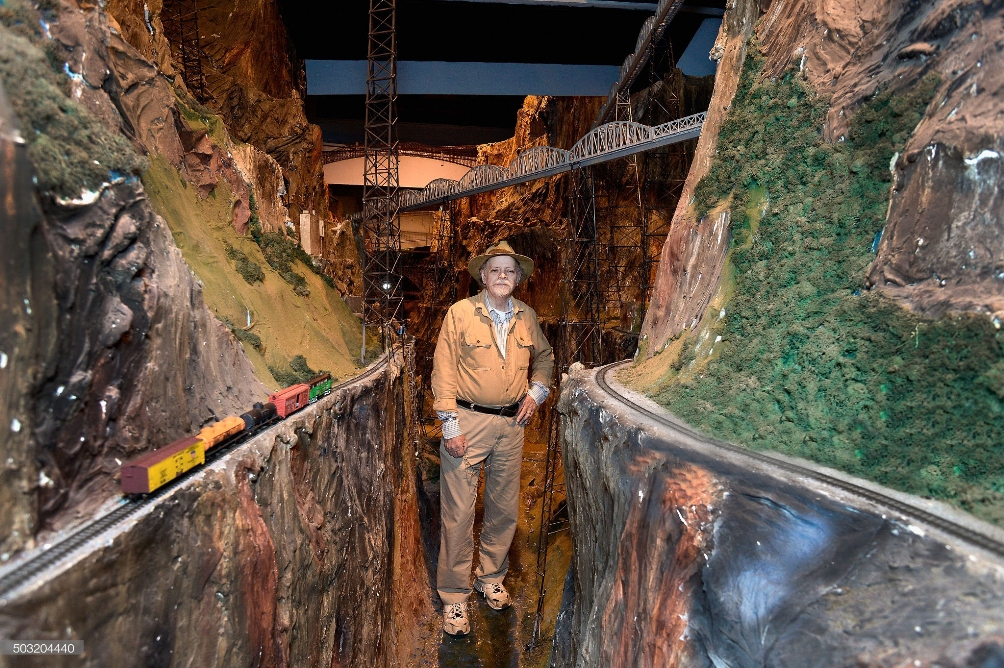
The genius behind it all. (Photo by Paul Marotta/Getty Images)
The Man Who Built It
Bruce Williams Zaccagnino got started in the same place most all model railroad enthusiasts do: in his basement. More correctly, in a basement of a house that was being constructed, according to the Northlandz website. The construction workers would leave for the day, and he would build mountains and tracks in his new basement.
Like today, nearly everyone who saw his work was quite impressed, to the point where he would open it for the public on weekends. He purchased the land on Route 202 as the popularity grew, and the rest is history.
Zaccagnino was no stranger to artistry, incidentally. He made a decent amount of money in the video game industry, including winning several awards as a developer/designer. He was, according to Sohail, quite the accomplished musician as well. “I watched him play the organs that we have over here. I never saw anybody play that well.”
But Northlandz was his passion, obviously. To the point where he spent his time building his dream, rather than marketing it. Sohail compliments his modesty, but expresses regret that his people didn’t meet him sooner.
“We would have promoted this throughout the world,” he says.
“He’s been interviewed with CNN and Fox, all the major, you know, and he never made a big deal out of that. He’s in the Guinness world records, this place, and he never even promoted that fact. We saw the certificate, it’s sitting on the exhibit and anybody could take it.”
“Bruce didn’t really advertise; he let itself advertise,” says Ken Vogel. “The point was, it was a guy who had a dream about building a great layout and actually pulled it off. The dream is accomplished.”
Zaccagnino is retired now…traveling, according to Julie Parker, so one guesses he’s actually riding trains instead of building them. But he’s appreciative that his art is going to live on.
“I think he was starting to see that a lot of stuff was falling apart,” Sohail reflects. “He had a feeling like if somebody doesn’t save it, it’s going to go away. When we bought it and we started repairing it and cleaning up and everything, he was very happy, you know, my art is being preserved.
“He said, this is my gift to the world.”

The Electric Road Trip

The technology keeps improving with electric cars, and it’s becoming much easier to take long trips without concern for being stranded. Yours truly explored and wrote about this for the Fall 2019 issue of JerseyMan magazine; you can view the PDF of the article here.
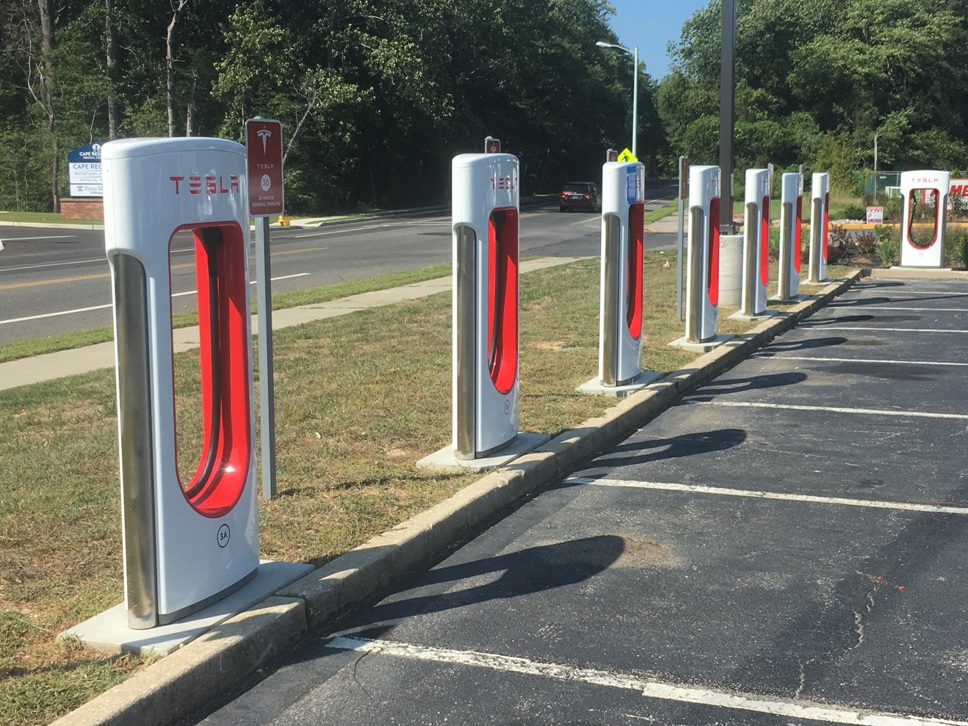
Plenty of juice available.
The Electric Road Trip
Car charging stations are springing up rapidly everywhere these days, making long-distance travel much easier for electric vehicle owners.
Sure, I want to save the planet from carbon emissions. Our children’s future depends on it. But is it really worth being stranded on I-95 on the way to Florida in my electric car?
Okay, maybe we’re not that spoiled. Despite some limitations compared to fuel-powered vehicles, electric vehicles are selling pretty well these days. We just need to solve that range problem.
As recently as 2016, McKinsey Industries, a firm dedicated to sustainability solutions, listed limited availability of charging stations as the third biggest barrier to electric vehicle sales, after the price of cars and limited driving range. Most EV owners still charge their cars at home, and owners of less expensive EVs with shorter ranges generally use them only for daily commutes and short trips.
But we are a nation of doers, and that situation is changing fast.
In May 2019, the Department of Energy reported that there are now more than 68,000 charging units in the U.S., nearly 11,000 of which are fast charging stations that can “fill up” an EV in less than 20 minutes. The Tesla superchargers appearing in many spots, including Wawas in the area, are only compatible with Tesla vehicles. But other networks are growing for the rest of us.
You may not have heard of EVgo, but you’ve probably seen the name NRG on the Broad Street Line’s Sports Complex station. Same company. EVgo offers DC fast charging…the fastest form available as of 2019…in 66 metropolitan markets from their considerable grid. As EVgo states, you can charge your car to 80% in approximately a half hour, while you stretch your legs, grab a bite, and take care of other business.
With new apps like PlugShare and ChargeHub available to route you to the next charging station, your biggest challenge on long road trips now is not spilling coffee on your phone.
Bill Evans, the CEO at Liberty Fox Technologies and one of our esteemed Legacy Club members, is the proud owner of a Tesla Model S.
The Model S isn’t cheap…it currently carries a price tag of $75K. If you’re a tightwad, you can drive a Model 3 off the lot for under $40K. If it helps, remember you’re going to be saving a lot of money in fuel over the long haul, even without the free supercharging for life offered to Model S owners.
Evans likes a lot of things about his Model S, but he considers the fuel savings to be “a nice perk”.
“I tend to drive between 1,800 and 2,000 miles per month. In my previous vehicle, I was averaging about $250 a month in gas. For the same mileage, I am averaging $80 per month in electric. So I am using about 1/3 the cost in electricity as I was in gasoline.”
The cost savings is generally typical of EVs. A Chevy Bolt currently averages 25.21 kWh (kilowatt hours) per 100 miles. So at 13 cents per kWh (the national average, according to the U.S. Department of Energy), then 100 miles would cost about $3.25. Even for the most fuel-efficient cars, that soundly beats gas prices.
But if you’re considering buying an electric vehicle to save money, we’re not quite there…yet.
In July 2019, U.S. News & World Report listed the cheapest electric vehicle as the Smart EQ Fortwo, at nearly $27K. The Fortwo is aptly named…attempting to shoehorn three people into one of these might make for a humorous YouTube video. Second is the Nissan Leaf at just under $30K, which is more spacious and offers 150 miles of range on a charge. Good for daily commutes…for longer road trips, maybe not so much.
But compared to the limited range technology of not very long ago, this is quite the improvement, and Tesla CEO and extreme visionary Elon Musk has stated that one of his company’s goals is making electric vehicles available at prices the 99% can afford. Given their great strides of late, this seems much more attainable than, say, colonizing Mars. (Which is also on Musk’s to-do list).

While you’re waiting, give your Tesla manual a read!
While the convenience and cost of owning an electric vehicle continues to rapidly improve, longer trips still require more planning. It’s not terribly difficult, but it requires more than simply pulling off the road at a Wawa.
For one, it takes longer.
A Level 1 charge is the equivalent plugging your car into a 120V outlet in your home, and can handle your short commute within reason if you charge overnight. With a Level 2 charge in a 240V outlet, available at most charging stations or from an adapter for your home, it takes about 4-8 hours to fill up. A DC Fast Level 3 charge gets the job done in less than a half hour.
Evans describes charging his Tesla like this: “If you plug the Tesla into a regular 120-volt outlet like you’d plug in your television, the car could take up to three days to fully charge (which is absurd). If you use a higher voltage outlet, the car can fully charge in about 5 hours.
“But if you need the car to charge really fast, you can get a very powerful charge at the supercharging station in as little as 15 minutes…and Tesla is working to reduce this even further to about five minutes. At 15 minutes or less, I would say it is no less convenient than a conventional car.”
But it’s still not quite as fast as the gas pump, which is why Tesla has been smart enough to install Supercharger stations at gas station/convenience shops, including some Wawas, Royal Farms, and other stores in the area. It works great for the store owner…the charging EV owner can spend time in the store ordering a sandwich or coffee while they wait.
Another growing spot for chargers is an obvious one…hotels. As of this writing, Marriott offers Level 2 charging stations at 3,137 of their hotels, including the Courtyard on Presidential Boulevard in Philly. Something to consider when choosing where to sack out in South Carolina on your way to Disney.
One important caveat, though…plan your trip to avoid the isolated station on the busy highway if you can. That could be a busy place. It’s a problem that internal combustion engine cars had in their early days.
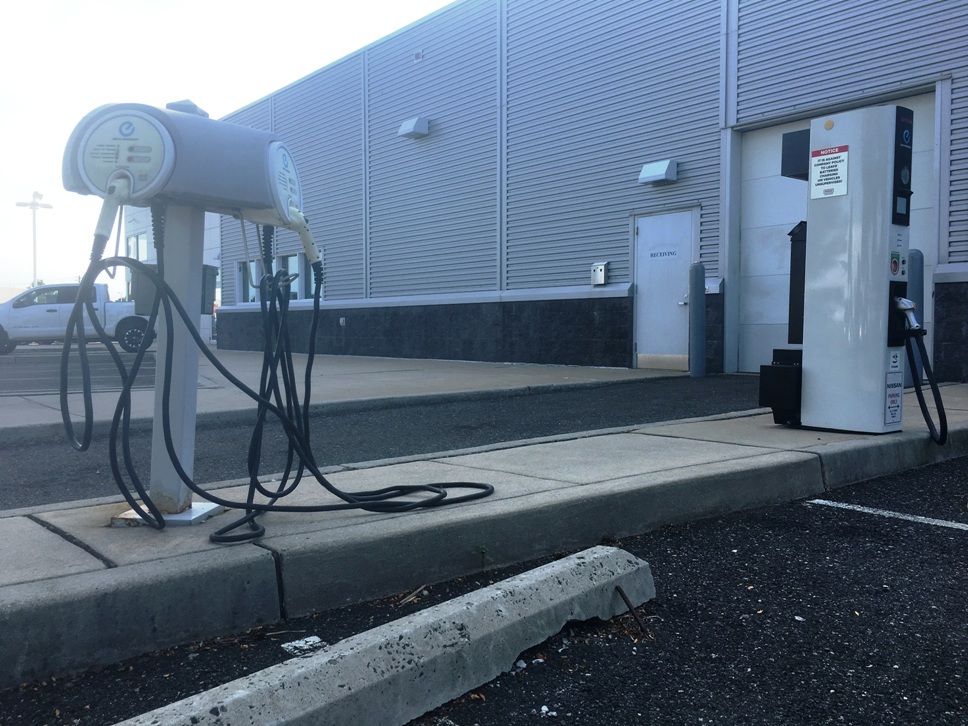
Car chargers at the Turnersville NJ Nissan dealership, where charging is free to customers.
With a rapidly expanding network of charging stations and dropping prices of electric vehicles, we may all be able to hit the road to visit a few ballparks without emissions in the not too distant future.
As recently as April 2017, Eric Schaal at Motor Biscuit published a piece called “5 Biggest Problems With Electric Vehicle Charging”. In it he explained that it’s more challenging to charge your electric car…especially while you’re already on the road…than it is to simply stop at a pump and fuel up.
“It’s quite difficult to fast-charge your car in many U.S. cities, even when money is no object.” Schaal pointed out. “You have to drive through strange neighborhoods and try to locate chargers in vast parking lots where GPS is known to drop out of service.”
The apps help, but not as much as they should, according to Schaal. “You might need two or three apps just to know where a charging station is, and once you get there you might not be able to use it because it’s operated by a provider with whom you haven’t opened an account.”
Just two years later, Bill Evans can testify that Tesla owners, at least, don’t need to be concerned about being stranded on the highway.
“You really, really need to be neglectful to put yourself in this position,” Evans explains. “If you charge the car every day like I do, you start every single day with your full mileage range (240 miles or 330 miles depending on your model). Given that I rarely ever drive 240+ miles in a single day, this is really a fringe case.
“Secondly, as long as you are using the GPS feature of your car, the Tesla is fully aware of its range, and if it is concerned you won’t reach your destination, it will route the most convenient Supercharging location into your directions to make sure you stop and top off before continuing.
“To end up on the side of the road with a dead Tesla and no chargers requires that you ignore every single warning and recommendation from the car to force that situation to occur.
“If you started in New Jersey and wanted to drive to Disney World, the Tesla will route multiple supercharging stops along the way and include the charging time at each in the projected Estimated Time of Arrival. As long as you use the GPS, the car will plan the entire drive and charging locations.”
And once there are charging stations at South of The Border, it’s likely the Northeast will be all in.
Did this post make your day a little bit?
I hope so. If it did, I would really appreciate your support.
When you use this link to shop on Amazon, you’ll help subsidize this great website…at no extra charge to you.
Thanks very much…come back soon!

Stop waiting for the car to drain. It won’t help. Just do it.
Battery Myth No. 1 – Full Drainage
JerseyMan Magazine always goes the extra mile for its readers, so in addition to the useful information contained here, we can dispel a myth for you.
You’ve probably heard it before: let your smartphone drain completely before charging it up again. This will…supposedly…help your phone battery last longer. And it stands to reason people might find that useful with their electric car, too.
Here’s the real scoop from our friends at Mashable: “It’s better to charge your phone every day than to do a ‘deep charge’ from time to time. Lithium-ion batteries, like the kind used in Samsung and Apple products, fare better when they’re charged. If you constantly let them drain to 0%, they become unstable. Your battery has a finite number of charge cycles, and every time it fully dies, that’s another cycle out the window.”
Leaving aside that you would have to let your car idle for an extended period of time near a charging station, this applies to your electric vehicle’s battery…completely draining it can reduce its overall life too.
So there’s no need to time your car charging station visit to the kilowatt hour. Or wait for your phone to completely discharge, for that matter. A helpful tip at no extra charge!
Battery Myth No. 2 – The Colder, Longer Lasting Battery
In case you’re wondering, no, putting your EV battery in a freezer won’t make it last longer.
Like with gas-powered engines, EVs can suffer decreased performance and range in extreme cold weather. There are several reasons for this, including that the electricity running your car’s heater uses the same battery that is plowing a car through the snow.
But before you balk at buying a new Bolt out of concern for New Jersey’s sometimes biting winters, consider this: Norway…yes, Norway…is one of the world’s leaders in adopting the electric vehicle. Part of the reason is subsidies, but it’s hard to imagine Norwegians buying cars that don’t work in the cold.
Yes, there is definitely decreased range in electric vehicle batteries in below freezing temps, more so than in fuel-powered cars. But there are ways to overcome this, including “preconditioning”, or pre-heating your battery before it is finished charging, similar to remotely starting up your car before driving. Many EV models have this capability.
John Voelcker from the Green Car Reports blog also suggests bundling up and leaving your coat and layers on in the car. While it may be cringe-worthy to pay upwards of $30K for a car that still requires wearing a coat to drive, Voelcker adds: “Don’t worry if you think you look like a dork; the real dork is the guy stranded on the side of the road because he ran out of juice.”
Incidentally, extreme heat can do a number on your battery too, since batteries contain fluid that evaporates in high temps. Even more so than with fueled cars, it’s recommended that drivers park in the shade or in garage whenever possible.
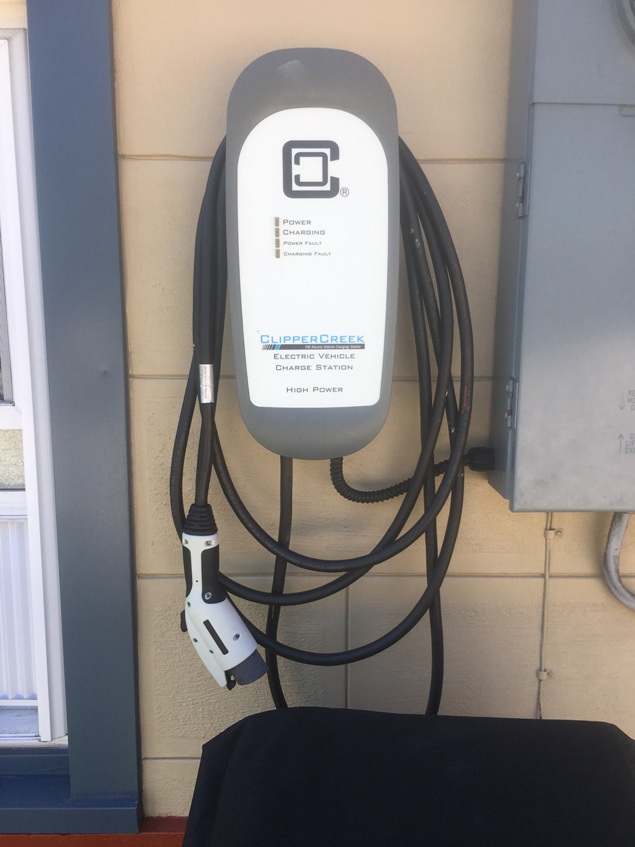
At the Candlelight B-n-B in North Wildwood, there’s only one charger. Don’t hog it.
Car Charging Station Etiquette
With charging stations still not quite as readily available at gas pumps, there is something of an unwritten code of conduct regarding their use.
One of the more common issues, according to Green Car Reports, is called “ICE-ing”. It’s when a car with an internal combustion engine parks in a spot with a charging station reserved for electric cars. If you can’t page security in the garage, the most you can do is leave a note for the driver.
Green Car Reports recommends other guidelines for using charging stations. For one, don’t occupy the space longer than you need to for a recharge, even if it’s a parking spot. If you can’t get to your car to remove the plug, you can leave a note for other drivers that they can remove it if they see your car is fully charged.
Also, if you can make it home, leave the charging station for someone else. They could be down to their last few miles and need the charge more than you do.
With their Supercharging stations, Tesla is somewhat enforcing charging station etiquette with an “idle fee”. If you keep your car at a busy charging station more than five minutes after your car is charged, a fee is charged on your account. Tesla states that this isn’t intended for profit…it’s working towards the goal of keeping charging stations as available as possible.
Basically it comes down to treating a charging station the same as a gas pump and not leaving your car there…but more so for now, at least until we go full electric.

Citizens Bank Park Parking, Subway + Taxi Crab Guide

I have tried just about every method to get to Citizens Bank Park: driving my car, using the PATCO-SEPTA transit combination, the Chickie’s and Pete’s Taxi Crab, you name it. In the end it is simple. Just drive. Citizens Bank Park parking is ample and easy enough.
But here’s some things you need to know, whether you’re driving or using some other method to get to a Phillies game…

Away from the city and close to two interstates, but there’s still traffic.
The Best Way to Get to Citizens Bank Park
The Bank is located on Pattison Avenue near Broad Street, convenient to both I-95 from north and south, and from I-76 (called the Schuykill or Sure-Kill by Philadelphians) from the east or west. South Jersey fans can use I-76 from the Walt Whitman Bridge.
Several exits off of both interstates are considered “Sports Complex” exits, but these get backed up as game time nears, especially when the Phillies sell out. You can use these but from about an hour and a half before game time till about the third inning, you may run into stopped traffic, not good.
My favorite best way to get to Citizens Bank Park is to use one of the Penrose Avenue exits from either interstate, and turn onto Pattison Avenue. This will take you to the ballpark from the less congested west rather than from the east and north like everyone else.
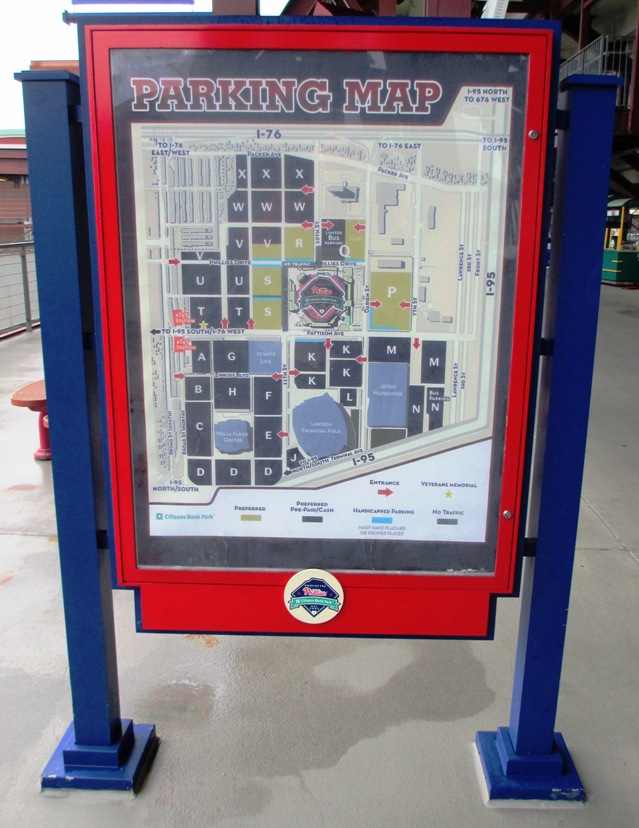
Once you’ve parked and entered the ballpark, the Phillies offer a highly useful map, for next time I guess.
The Phillies have their own lots, and Lincoln Financial Field also has plenty of parking too. Here are a few of my favorite choices as team lots go:
Lot G: Lot G is my default choice at Phillies games, for several reasons. It’s in the path when coming from Penrose Avenue, it’s close to the ballpark, and it’s an easier out than the lots north of Pattison. Lot G, like all lots south of Pattison, is legal for tailgating and it’s close to Xfinity Live! if you enjoy such things.
Lot K (Lincoln Financial Field): If there’s rain in the forecast, try Lot K at the football stadium…there are solar panel roofs over many of the spots, making tailgating possible even in less than ideal weather. The Linc is also right across the street from the ballpark and an easier out (not as easy as Lot G, though).
Lots W and X: I don’t usually arrive from Packer Avenue, but when I do and want to be close, I use one of the lots north of the ballpark. It’s a pretty nice approach from 10th Street; you actually see the inside of the ballpark rather than the exterior, as it was meant to be. Also an easy out onto Packer.
All of the Phillies lots mostly cost the same, but here are a few cheaper choices.
Book your ideal Phillies parking spot ahead of time…with my friends at ParkWhiz!
Citizens Bank Park Parking – Cheaper Options
Again, finding Citizens Bank Park parking for a Phillies game isn’t terribly difficult. Saving money parking at a Phillies game can be a challenge, though. So here are three decent and less expensive alternatives to the official Phillies lots.

The difference is clear. And the walk isn’t much further.
Citizens Bank Park Parking, Cheaper Option #1) The Jetro Warehouse. You have to go south of the warehouse to get the cheap rate, but it’s significantly less. It’s a bit of a walk and not pretty to look at, but good if you want to save a few bucks.
There’s a small breakfast and lunch eatery here called the Stadium Grille, a place that gets good reviews for their cheesesteaks if you want a cheap meal before the game.

Stone construction makes the lot look safe for parking.
Citizens Bank Park Parking, Cheaper Option #2) The Church Lot on 10th Street. I don’t know the name of this church or even if it is a church (Google Maps is no help), but it looks like one so I’m running with it. This lot is on 10th Street, north of Packer Avenue and just north of the I-76 overpass. It’s across the street from a football field.
It’s a little further away, and you have to cross Packer Avenue, but the walk isn’t too bad and you can see the inside of the ballpark as you approach. It’s also an easy out onto Packer.

Squeezing it just inside the yellow paint…champions of thrift!
Citizens Bank Park Parking, Cheaper Option #3) Free Parking! Okay, I’m sharing a couple of secrets to park for free at Citizens Bank Park here, keep them to yourself.
You can, if you’re early enough, park on the west side of 7th Street, north of Packer Avenue; you’ll see signs where you can’t park. Just stay out of that zone. It’s a walk, but it’s free. Phillies ushers do this.
Some streets north and west of the ballpark, like Bigler Street, appear to have free spots; I’ve seen people park on Hartranft Street west of the ballpark, which is almost as close as an official lot. I don’t know if I would do these for night games, though. It’s not a terrible neighborhood, but it isn’t great either.
Don’t try parking on South Lawrence, unless you want to risk a $50-plus ticket.
Those are some less expensive alternatives for parking at Citizens Bank Park, but you have other options to get there, like the Broad Street Line.
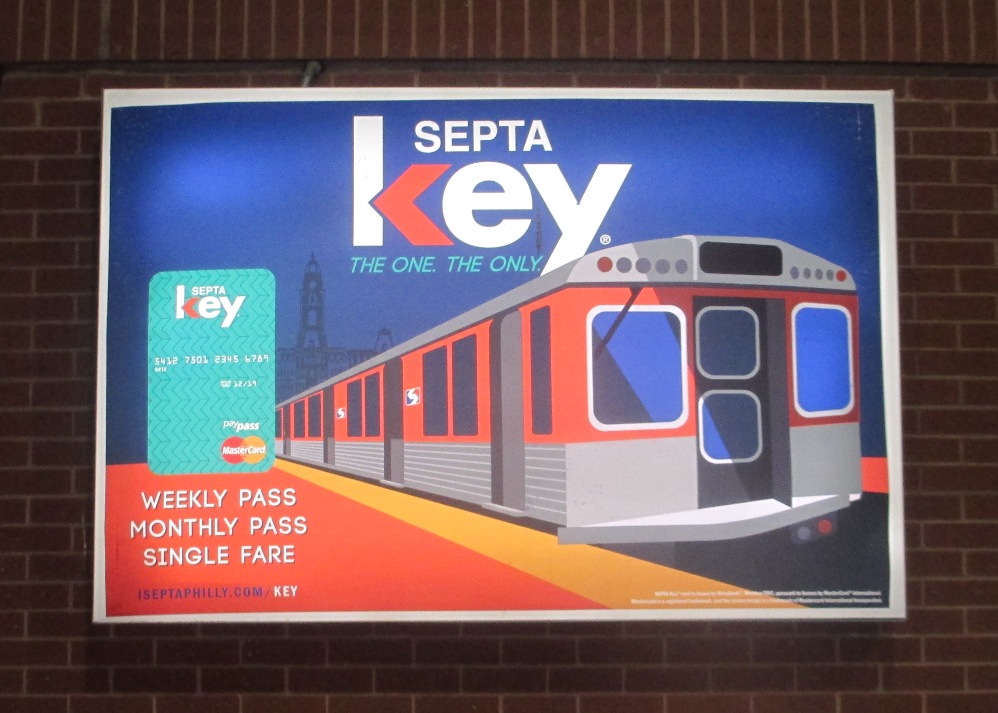
Public transit is the key to avoiding traffic!
SEPTA to Citizens Bank Park
While most people drive to Phillies games, a fair amount of people do take SEPTA to Citizens Bank Park, with the Sports Complex station located just a few steps away. There are times when the Broad Street Line is preferable to driving…say, when another event is happening in one of the Philly sports venues, you’re arriving via Amtrak or Regional Rail, or if you’re staying in the city without a car.
So here’s a few things you should know about taking the SEPTA Broad Street Line to a Phillies game:

Gangway! Philly sports fans coming!
SEPTA to Citizens Bank Park, Tip #1) Use The Express. The SEPTA Broad Street Line stops at the Sports Complex at the southern end, making it easy to know which train to use and which direction to go. But you will definitely prefer the Sports Express trains, both before and after games.
The Sports Express skips a number of stops, but most importantly it bypasses everything from Walnut-Locust to the Sports Complex, and coming back especially this is much nicer. If you’re using PATCO from New Jersey to get to the Broad Street Line, the Express means a straight ride with no stops to and from Walnut-Locust.
If you have a choice, definitely use the Express. You’ll thank me.
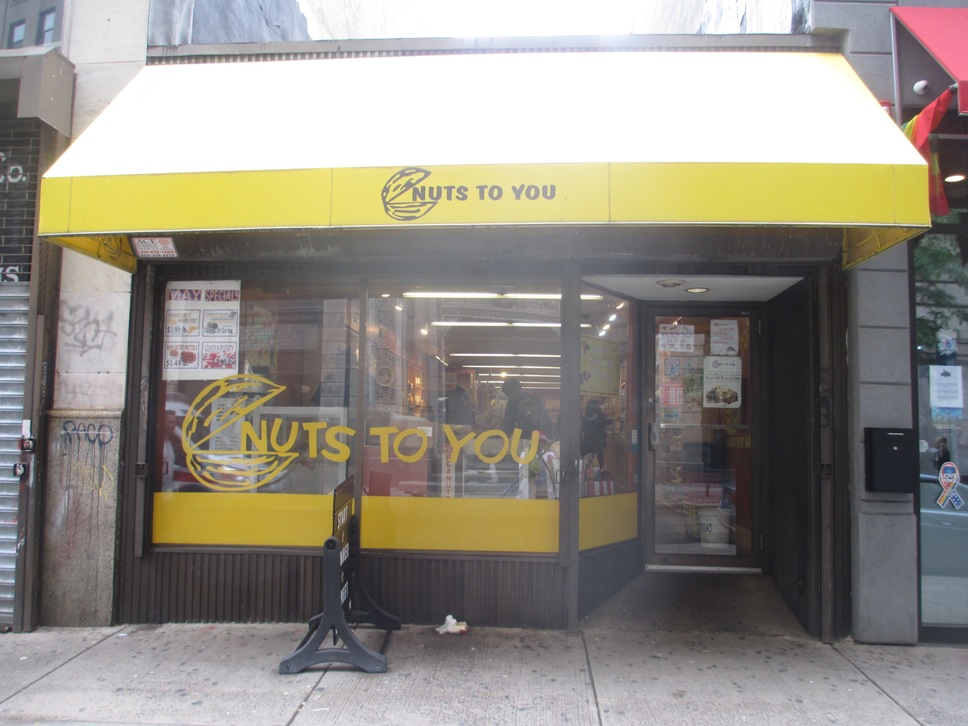
Go ahead. They have peanuts.
SEPTA to Citizens Bank Park, Tip #2) Bring Your Own. If you’re using the train to save money, or even if you’re visiting without a car and staying in Center City (that’s downtown for you non-Philadelphians), take advantage of the street grub shops and get peanuts and stuff to bring in. The Phillies allow this, you just can’t bring in alcohol or projectiles. It’s a great money-saver.
My favorite pro tip for using the PATCO-SEPTA combination from South Jersey is to stop at Nuts To You on Walnut Street, which is in the path from PATCO to SEPTA on street level. They have outstanding still-warm bags of roasted peanuts and any other snack you can imagine. I love sesame sticks, and Nuts To You has them in multiple flavors. The place is a true gem.

Maybe not when a basketball game is going on, but otherwise fine.
SEPTA to Citizens Bank Park, Tip #3) Consider Regional Rail. The Regional Rail lines spread a web over southeastern Pennsylvania (hence the SEP in SEPTA), and they’re comfortable and smooth commuter trains.
The Regional Rail is a nice alternative on summer weekends. Traffic on I-76 can be hellish on Friday nights especially, as what seems the entire region’s population heads to the Jersey Shore. Park somewhere along the Regional Rail line cheaply and ride the train to Suburban Station instead…it’s a two block walk transfer to the Broad Street Line, but that beats sitting in shore traffic in my opinion. Be sure to check the schedule and know that you can get a ride back though.
If you’re bringing the family on a weekend, check out SEPTA’s Independence Pass. For a price that is likely cheaper than gas and parking, the whole family can ride on the train to the ballpark and back. That one’s good for Sunday games.
SEPTA can be a decent money saver over parking and bridge tolls coming from NJ especially and it’s an alternative to city traffic if you’re staying in Center City (downtown for you non-Philadelphians).
If you’re looking for another alternative to driving to the ballpark itself, check out Chickie’s and Pete’s Taxi Crab.

Cleverly painted and you’ll hear it.
Chickie’s And Pete’s Taxi Crab to Phillies Games
If you want to know where you can get a meal and/or inexpensive brew near the ballpark, the Taxi Crab from Chickie’s and Pete’s offers the best of both worlds.
Ballpark beers are running $8 and up these days, and we all know how much ballpark food is. At Chickie’s and Pete’s on Packer Avenue, you can get their famous crab fries and a beer to go with it, cheaper than in the ballpark and in a climate-controlled eatery. And they’ll give you a ride to the game in the Taxi Crab shuttle with its cool paint job.
The shuttle is free; unfortunately you have to pay to park at Chickie’s and Pete’s. It costs a bit less than parking at the ballpark though, and your car is valet parked.
In addition to a better deal on parking and an easier exit, you can enjoy a meal at a popular local institution. It’s especially great for visitors for that Philly experience.

At the ballpark, you pay more for the cheese sauce.
So you know, Chickie’s and Pete’s has a stand in the ballpark for their famous crab fries, but they’re much more expensive at the game (they charge extra for the necessary cheese sauce even). You can park at the restaurant itself, order crab fries to go, and get a ride to Citizens Bank Park’s front door.
Besides the fries, Chickie’s and Pete’s has good grub at reasonable prices. You won’t save too much money eating here over eating at the game, but there’s a decent selection of food and a long list of quality beers. It’s a big place, so you can probably land a seat.
So there are several benefits to the Taxi Crab: cheaper crab fries, less post-game traffic hassles, and a less expensive place for a drink before or after the game. Worth a shot for something different.
There’s your helpful guide for how to get to Citizens Bank Park; it’s relatively simple. But I highly recommend that you plan your route in—and out. Citizens Bank Park is surrounded by lots, and you’ll want to be sure that you’ll have as little trouble as possible exiting, because it can take a while.
Did this post make your day a little bit?
I hope so. If it did, I would really appreciate your support.
When you use this link to shop on Amazon, you’ll help subsidize this great website…at no extra charge to you.
Thanks very much…come back soon!
(Note: this article contains affiliate links. If you use an affiliate link to make a purchase, this website earns a commission, at no extra cost to you. Thanks for your support!)

Respect, Integrity, Trust – JDog Junk Removal

JDog Junk Removal recently opened their 200th franchise in the Boston area; BostonMan magazine asked me to cover the milestone. (You can view the magazine article here.) I spoke with owner Jerry “JDog” Flanagan and his partners about the company and their brilliant business model. (See JDog’s website here.)
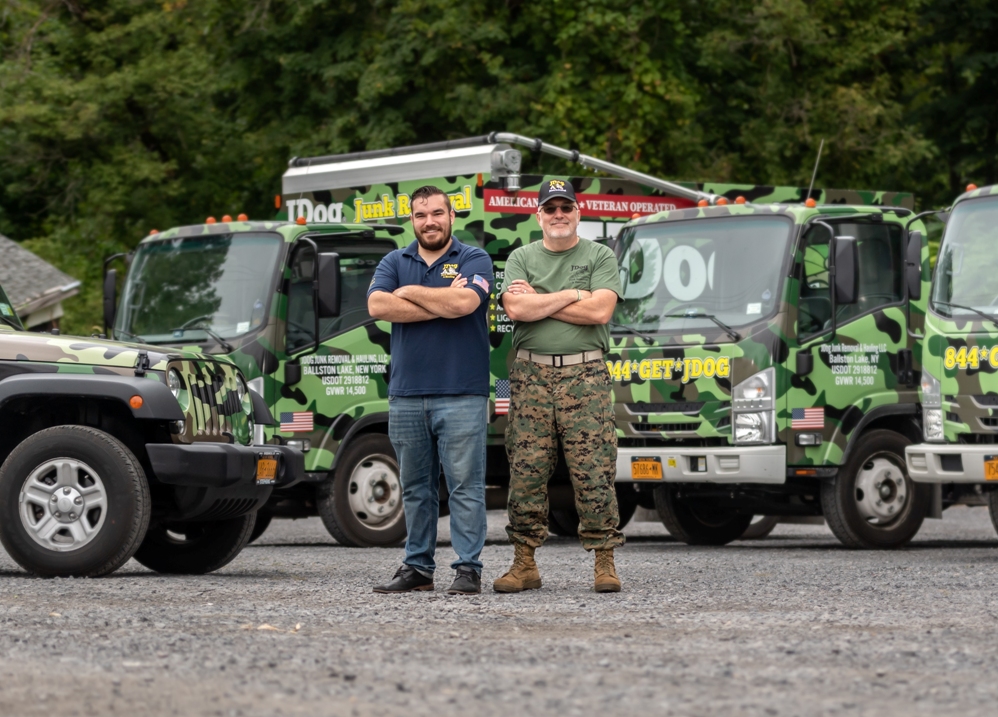
Respect. Integrity. Trust.
JDog Junk Removal is opening their 200th franchise here in Boston…and they’re bringing their military-inspired values of respect, integrity and trust with them. Those values have inspired a pretty stellar business model.
The idea of hiring veterans doesn’t need to be sold to business owners as a gesture of gratitude for their sacrifices. But there’s another very good reason. It’s great for business.
If you have any curiosity why, listen to R.J. Gagnon, co-owner of JDog Junk Removal’s new Boston franchise, tell you about Crazy Keith.
“When we interviewed him,” Gagnon says, “he needed help. We had a couple of concerns. Obviously he was a little older than most of our guys, doing this very physical job. And he was a Vietnam vet that came with his own set of troubles and conflicts.
“So the first thing we did was make sure that we found him a place to live in the area. We found him an apartment, and we helped him get established and get into programs to help him.”
R.J. and JDog needn’t have worried.
“This Vietnam War veteran, he rides his bike from his apartment to the bus stop, gets on the bus, rides into the city the hub is in, has a bike stationed at that bus stop, jumps on that and rides into work, repeats the process home, and repeats the process day after day.
“He is never late, he never calls in sick, and he works harder and faster than any 20-year-old on our crew. He has a nickname, Crazy Keith, because when they get done with a whole house cleanout, panting in the hot sun, Keith is still doing somersaults and flips and starting to stretch out with his martial arts moves. Those military values of completing your mission? That’s what he lives and breathes.”
Incidentally, that rubs off on team members.
“He is like a role model to some of the younger civilian guys. ‘How is this 62-year-old Vietnam vet out-hustling me? I’m 20 years old and he is out-maneuvering me out there!’”
R.J. Gagnon’s father, Ray, is a retired Marine Corps Master Gunnery Sergeant. The two are taking command of JDog’s 200th franchise, located in the Framingham/Worcester area. The growth of JDog, which originated in Philadelphia, has been swift and decisive…in no small part because of their hiring and franchising practices.

Jerry “JDog” Flanagan, making a difference for those who’ve made a difference for us.
Jerry “JDog” Flanagan, co-founder and CEO of JDog, was a wire dog in the Army, hence the nickname. He has never needed to be told the value of employing someone who has served in the toughest of environments. He knows the work ethic ingrained in a military uniform.
“You’re 100% accountable for your actions,” he says. “You learn how to respect people, you learn how to say yes sir, yes ma’am. And your work schedule is out of control. You’re going to work more hours than you’ll ever work in a civilian job.”
It was great life training for the workplace. “I was able to get to work before everybody else, I stayed later than everybody else, I volunteered for all the crappy shifts. It separated me from the average civilian.”
Flanagan learned, as most entrepreneurs do, that his work habits would better benefit his family if he owned the business himself.
With his wife Tracy, he started a kids party center in 2007. It went under in the recession of 2008. Without a college degree, he needed a better way to support his wife and daughters, so he researched recession-proof businesses. One of them was junk removal.
He started handing out postcards offering junk removal service to neighbors. The ones that hired him were immediately impressed.
“I had been doing it for about two weeks, when someone mentioned that I was doing the job so fast and on time, and I was in a polo shirt and was clean cut. They wanted to know where this came from. I said, well, I was in the military, so I’ve always been able to outperform anybody because of my work ethic.
“They said, ‘You should market that!’ So I slapped ‘Army Veteran’ on my business cards and stuck it on the side of my jeep.”
The response immediately showed that he was onto something. “The phone started blowing up and everyone started using me in the area. I lasted probably eight months, and I realized that I needed helpers.
“I went to the VA, and I hired compensated work therapy patients that were struggling with drugs and alcohol. Combat veterans that were coming back and couldn’t find work. I was rotating different guys into my trucks, putting them on the other side of couches and carrying items.
“They felt great about it, and we were able to run the business with almost all veterans initially. I realized that we had something big here, and my wife said we should franchise this thing. We sold five franchises, and I realized other veterans wanted to be part of this.”
As Flanagan says, it’s a hand up, not a handout.
“It’s not just about philanthropy. These are real businesses. They make real money, real equity for families. When you have that and you have fun doing it, and you’re putting veterans to work, and the community’s getting behind you…it’s just a recipe for massive success.”
His customers “just have a lot of respect for military, either side of the aisle, it doesn’t make a difference. I had no idea that it was going to be that powerful. I didn’t realize that the competitive advantage of being a military veteran business was that strong.”

Camouflage makes for some stunning logo artwork.
So why don’t more veteran-owned businesses trumpet military service, such as with the stunning camouflage-painted trucks like JDog uses? Gagnon thinks it’s a reluctance to use their service for personal gain. A reluctance that both he and Flanagan believe is misguided.
“I see it as a way to communicate that we’re respectful, that you can trust us, and that we carry ourselves with integrity,” Gagnon says. “Veterans became different people the moment they signed up. They’ve served everyone, and that brings with it some weight and value.”
Flanagan agrees that it’s an unquestionably impressive credential.
“The way I equate it is this: if you went to get your MBA at Harvard or you graduated MIT, what are you going to do? You’re going to put that on your LinkedIn, you’re going to put it on your resume, you’re going to let the world know, right? Well, veterans don’t do that, and veterans need to, because you could equate it as something similar of an accomplishment.
“There’s veterans out there that own a business, you’d never even know they’re a veteran. They’ve gotta figure out how to get their brand out there, because it really works.
“Customers are longing for someone to open the door up in their home, and say thank you, good morning sir, look them in the eye, do a really good job and have respect, have integrity and have trust. And the company was founded on respect, integrity, trust.
“They’re going to use us over and over again. They’re going to tell their friends and family. They tip us, they make sandwiches, they leave their doors unlocked for us to go in when they’re not home. It’s insane. There’s not one other service model out there, plumbers, painters, you always feel like you’re getting ripped off. In our case, it’s the opposite.”
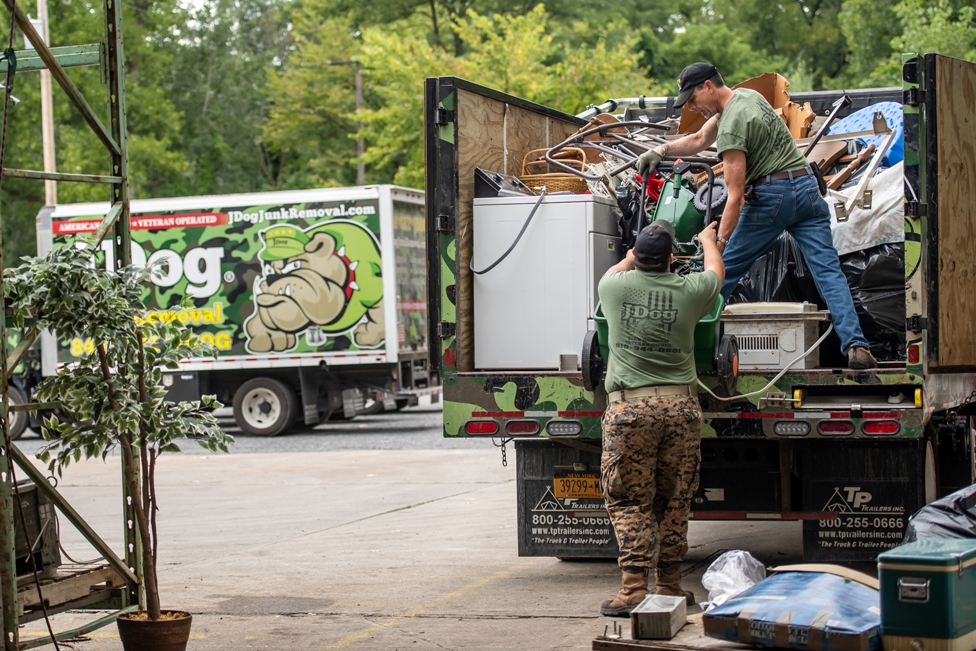
JDog has an effective recycling program as part of its business model.
JDog is not only a phenomenal success story for veteran employees and franchisees, they’re a tremendous boon to communities they serve, both by helping local veterans and protecting the environment.
Between 70% and 80% of what JDog collects, according to Gagnon, never reaches a landfill. They use a process R.J. calls the three Rs: re-purpose, re-sell, or recycle. Still-usable items, such as furniture, get donated to charities helping veterans in the area. For items that are re-sold, proceeds go to funding charitable functions. Other items get recycled, including paper, cardboard, glass, plastic, wood, and metal.
Everyone benefits. “Those programs are part of the reason why they decided to go with JDog. People know that it’s not just a junk removal company. We’re actually doing something good here.”
Their 200th franchise in the Cradle of Liberty, while obviously momentous, is just another stop on the freeway. JDog has signed on for 300 more franchises, including a few more in the Boston area.
In the space of just a few years, Jerry Flanagan and his warriors have built an extremely lucrative business with one simple premise…that military values of respect, integrity and trust bring an almost unbeatable competitive advantage to an enterprise. More importantly, Flanagan, his wife Tracy, and his business family like the Gagnons, have found a calling.
“The model that started out as a way of survival has turned in to a massive inspirational company that’s changing families and lives,” Flanagan reflects.
“We’re bringing veterans back together under one ethos of brotherhood. And that gets me up very early every day. It just doesn’t stop, because if there’s a veteran out there in the United States, my obligation is to put them in business wherever they are in the country.”
Judging from JDog’s astounding growth, it looks like Americans are on board with the plan.
Did this post make your day a little bit?
I hope so. If it did, I would really appreciate your support.
When you use this link to shop on Amazon, you’ll help subsidize this great website…at no extra charge to you.
Thanks very much…come back soon!

A great deal for military members and potential business owners.
Own A JDog Franchise
JDog is offering franchises by the truckload, but their focus is franchising to military veterans and their family members. Having a DD-214 or being an immediate family member who can show a DD-214 is a must. They also take a good look at a prospect’s finances, conduct multiple interviews and introduce them to their staff.
But if you’re a veteran looking to run your own show, it’s a great deal.
“Basically we wind them up and let them do their thing in their markets,” Flanagan says. “We’re not killing everybody over small stuff, as long as they’re running their operation properly.”
Gagnon, whose strength is marketing, understands the benefit of such creative control. “We’re empowered to make the business decisions that we have to make that make sense for our business and our territories, which you don’t get with a lot of other franchises.”
Flanagan also believes in rewarding the ones that do well over time. “We have a flat, scalable royalty. What that means is they pay a flat royalty a month regardless of what their sales are. So if they’re doing higher in sales, they keep those proceeds, they keep the recycling dollars, they keep the re-purposing and reselling dollars, which allows them to expand and reinvest back in their own territories.
“A lot of these guys are getting fees for their call centers, their routing systems, their website, their PR. We don’t charge for any of that stuff. That’s all part of the franchise, which makes it very, very affordable.”
If you’d like to find out more, there’s a separate page on the JDog website dedicated to franchising, including a video of the benefits. It’s at https://www.jdogfranchises.com/.

Offering a hand to the heroes of the future.
Giving Back: The JDog Foundation and Military Spouses
JDog is philanthropic by nature, donating furniture and usable goods to veterans in need and using proceeds from recycling for charitable events. But now they’re giving back to America’s finest too, with the recently formed JDog Foundation.
The JDog Foundation’s mission is to “provide leadership, support, awareness, and funding to Veteran Organizations that are charged with rebuilding or repairing homes and lives for our Veterans.”
They’ve landed a good representative to head the foundation…Ralph Galati, a former POW who was captured when his plane was shot down and landed in the Hanoi Hilton with John McCain. He was released in March of 1973, just after his 25th birthday. Galati is the former Director of Veterans Services at St. Joseph’s University in Philadelphia.
JDog franchise owners also benefit from Tracy Flanagan’s Military Spouses program, the group of women supporting their business owner husbands. Tracy writes a newsletter and manages the group, Jerry says. “It’s just supporting their franchisees out there through the women, who really run the operations and the houses behind the scenes, really.
“We all have to answer to somebody and it’s those women out there that are really strong.”
If you’d like to find out how to contribute to the JDog Foundation, it’s at https://www.jdogfoundation.org/.
(all photos courtesy of Jerry Flanagan and JDog Junk Removal.)
Eddie Van Halen 1955-2020: The Ultimate Rock Star
Eddie Van Halen was the greatest guitar player in the history of rock music…no matter who was behind the microphone in his band. His impact even beyond music was immeasurable.
Eddie Van Halen – The Ultimate Rock Star
Not many musicians can take that “ultimate rock star” title…the image, the persona, and the impact.
Pete Townshend and Jimmy Page embodied it all as much as anyone, but neither of them did it through virtuosity on an electric guitar. They were capable players who made their marks as songwriters more than anything else.
What made Eddie Van Halen so special was that he excelled at both. Eddie’s strength wasn’t just coaxing otherworldly sounds out of a guitar. It was doing so in a tasteful way…making the unusual sounds and technical brilliance perfectly fit the song.
He may have been extraordinarily gifted with a musical ear, but what he accomplished musically took more than talent. You have to practice a lot to be as good at playing guitar as Eddie was…and you have to put some serious time in a studio to make songs sound as great as Van Halen’s did.
They may have played in different styles and appealed to different rock audiences, but the recently departed Neil Peart and Eddie Van Halen were two of a kind. Their strength was not just astounding technical skill. It was what they added to the songs with that skill. Eddie’s guitar playing made mediocre songs good and good songs great.
That is, ultimately, what makes a rock star Hall of Fame-worthy, if I were to decide who was worthy…and I’m certain I’d do a better job of it than the Hall’s crop of judges, who for some idiotic reason thought that Van Morrison and Jefferson Airplane deserved induction before Chicago or Rush did.
How To Get A Rush Fan To Like Van Halen
I barely knew anything about Van Halen before I entered high school in 1982. At the time their latest album was “Diver Down”, and I may have been slightly familiar with “Eruption” and “Dance The Night Away” or something. I don’t really remember.
It was my high school friend Greg Mitchell who played “Little Guitars” and “Cathedral” for me, jolting me into realizing that Eddie’s skills stretched beyond this party band’s reputation. This guy could play, and he could compose too. Mitchell knew what to play for a Rush fan.
Some of my favorite Van Halen tracks are the little solo pieces of Eddie’s…like “Cathedral”, “316” from For Unlawful Carnal Knowledge, the opening synthesizer intro in 1984, and of course, “Eruption”. It’s no small trick to make little pieces of serious musicianship and artistry fit on records from a band that never seemed to take anything seriously.
I’ve never been a worshiper of any other members of Van Halen. Alex could play fast and had a great rock drum sound, but his drum parts weren’t all that imaginative, and his solo…at least, the one time I saw Van Halen live…was nothing special. Michael Anthony isn’t worth mentioning in any discussion of great rock bass players; he probably contributed more with his backing vocals than with anything he did on a bass guitar. And the revolving door of lead singers for Van Halen…take your pick…needed only to act like rock and rollers. Any reasonably decent singer on the microphone would have been enough, in this scribe’s humble opinion.
I don’t mean to be disrespectful to Eddie’s bandmates. David Lee Roth possibly excepted, they were smart enough to perform to their abilities and let their superhuman guitar player write the songs and steal the show. Mike and Alex probably deserve credit for recognizing their limitations. Trying to steal the spotlight from Eddie Van Halen would be like Denny Laine leaving Wings because he felt he was a greater talent than Paul McCartney.
Who knows…it may be a little harder than it looks to enjoy performing when you know 98% of the audience isn’t there to see you.
Eddie may have been the only exceptional artist in Van Halen, but it was enough.
Was Eddie Van Halen The Greatest Rock Guitar Player Ever?
Even if it’s a subjective question, it’s not difficult to make the case for Eddie as the best rock guitar player ever, especially when you talk about the whole package.
After all, what actually makes a great guitar player? Technical ability and precision? Songwriting and arranging capability? Live performance? Influencing a generation of guitar players? When it came to being a complete rock star, Eddie was that great, head and shoulders above the guitar heroes of his day or any day.
Maybe the best way to gauge whether Eddie Van Halen was the best ever is to ask the question: who was better?
Here are some names I can think of and what I think…and I am no guitar player, so take this for what it’s worth – the opinion of a music fan:
Jeff Beck. This is a tough one for me, because I’m a huge Beck fan, and he’s a true genius and innovator who made great music to go along with his insane playing. But ultimately, I would argue that Eddie played with more precision, especially on stage, and listening to both artists, I focus more on the guitar playing more when listening to Van Halen…not much, but a bit more.
Don’t make me ponder this one. I thought Eddie was better both technically and certainly so on a songwriting level (Beck didn’t compose most of his music), which I hate to admit as a Beck devotee.
Eric Clapton. Clapton was a great blues artist, but ultimately he was probably overrated as a guitar player. As a musician friend of mine put it, “I have no patience for a guy who’s proud to call himself ‘Slowhand’”. He was great for his genre, and I love a lot of Clapton performances…it’s no easy thing to upstage a Beatle, but “While My Guitar Gently Weeps” is brilliant because of him. But Slowhand couldn’t keep up with Eddie on a rock stage.
Joe Satriani. Again, I love Satch and I might even say that he’s technically better than just about everybody, even Eddie. The dude can shred. But all things considered, with all due respect to Satch’s music, which I like, he isn’t in Eddie’s league on a songwriting level and making a guitar part fit a song. Technically better than Eddie? Probably. Musically? Not even close.
Steve Vai. Like his mentor Satch, Vai is also superbly skilled, which was, of course, why he was featured on David Lee Roth’s solo records after Dave’s contentious split with VH. But while Vai has put out some decent solo music, he also isn’t in Eddie’s world on a songwriting level.
Yngwie Malmsteen. Yeah, the guy could play a million notes a second. But comparing Alcatrazz to Van Halen brings to mind David Letterman’s comparison of Buddy Biancalana to Pete Rose. Still, Yngwie did inspire this utterly awesome Onion headline.
Jimmy Page. There was no one better in the history of rock than Page when it came to composing musical hooks. But when comparing the two, it’s the inverse of comparing Joe Satriani or Steve Vai to Eddie…technically, Jimmy was nowhere near as proficient with an axe. Jimmy might win as a composer, but not by very much. Eddie wins hands down on technical skill and precision.
Jimi Hendrix. Jimi did a million things on a guitar that no one ever thought of, and I love a lot of Hendrix songs…I don’t think any artist’s work lent itself to covers better. But like with Clapton, I wouldn’t argue that Jimi was better than Eddie on many levels, except possibly live performance. Eddie was a big fan of Jimi, so that counts for something, but I’d argue Eddie outperformed Jimi overall.
Slash. I liked Slash in Guns-N-Roses and even more in Velvet Revolver. He’s been a part of some truly killer rock numbers. But while he’s very good, Slash doesn’t really stand out as either a one of a kind guitar player or someone with so much impact on aspiring players. Not even really a close argument.
George Harrison. He wasn’t even the best guitar player in the Beatles. Next.
Stevie Ray Vaughan. Like Clapton, Stevie Ray was another player who was great for his genre, and I am a huge fan of his too. But ultimately he falls short of Eddie on imagination…let’s face it, Stevie’s solos could get a little repetitive at times…and he wasn’t the technical wizard that Eddie was, although he was pretty darn good. SRV is one of the greatest blues rock artists ever, but he wasn’t a better guitar player than Eddie.
Allan Holdsworth. Don’t know who Allan Holdsworth is? Well, you should if you’re reading this…because Eddie himself pronounced Holdsworth to be the best. I’m including him in this discussion for that reason. Eddie wasn’t the only one who thought no one could touch Allan on a guitar. But as his lifelong dues-paying career showed, Holdsworth played music for a small niche, and his focus was more on playing than songwriting. Which is fine, even admirable in his case, but we’re talking about the whole shebang here.
(Still, I love the Atavachron album…and it’s still the best exhibit of the SynthAxe, an instrument I would have loved to have seen Eddie take up.)

“Hey, isn’t that the guy that sang in Eddie Van Halen’s band?”
(photo courtesy Aileen Bannon: Philly2Philly.com)
Was Van Halen Better With Dave or Sammy?
As someone who owns just about every VH studio album, here’s my humble opinion…which was, judging by record sales, shared by many: it didn’t effing matter who was behind the microphone.
Okay, maybe the Gary Cherone era wasn’t Van Halen’s finest hour, but one could argue that the band had run out of gas by that point. It happens to many great artists, especially the ones who fully embrace the drinking and drugs lifestyle as they did.
It’s not that Diamond Dave and the Red Rocker didn’t have their merits as performers, but as the 5150 album proved…and quite easily I would add…Eddie was the genius behind Van Halen.
I love 5150, because I remember well when it was released and what a statement it was. That statement was: F*** you, Dave. We’ll be just fine without you. As much as Dave seemed to take credit for the band’s enormous success, it was kind of fun to see him deflated.
The Roth split from Van Halen was great fodder for the music press, especially when Dave and Eddie were trading barbs. Forgive me for not remembering the sources…Circus magazine might have been one…but I remember Eddie being quoted saying “Twelve years of my life, putting up with his bullshit.” Dave’s response: “Poor little Eddie Van Halen. Forced to live a lie.”
Dave also took a shot at Sammy, saying that Sammy will be singing “Jump” on stage, and that he would never sing a Sammy Hagar song. To which Sammy responded by handing the microphone to an audience member at a show before the band performed “Jump”, telling him, “Any old schmo could sing this song.”
It was fun for all of us to watch, I suppose. Music fans seem to enjoy dysfunction, maybe because we love to argue who was most important to our favorite acts. As recently as 2013, Paul McCartney has told the world to stop blaming Yoko for the Beatles’ demise. David Gilmour and Roger Waters went at it pretty spiritedly after Waters’ departure from Pink Floyd and Gilmour’s decision to keep the band going without him. But it probably wasn’t as fun for the band members. Later Eddie would admit that he was in tears when Dave left the group.
But the band soldiered on with what was arguably their best album at the time, and for another three albums afterward Eddie continued to improve, both as a songwriter and guitar player…which was a pretty high bar. As any Van Halen fan who remembers it could tell you, the band didn’t miss a beat when Dave departed.
Have the argument all you want whether VH was better with either singer. To this fan, it’s moot. It’s far easier to argue that David Lee Roth would never have been heard of without Eddie working his otherworldly magic on the same stage. Before replacing Roth in Van Halen, Sammy Hagar’s big radio staples were “Three Lock Box” and “I Can’t Drive 55”. The guy didn’t exactly have a Hall of Fame career without Eddie wailing on a guitar next to him.
I don’t prefer the Dave or Sammy version of Van Halen. I love songs from both eras. Because both eras feature the sound of Eddie Van Halen’s guitar.
Eddie Treated Michael Anthony Badly? Really?
I’ve read a lot in the past few days that paints an unflattering picture of how the Van Halen brothers treated bassist Michael Anthony…cutting him out of royalties, treating him like a paid session musician, and generally dismissing his contribution to the band. Sammy Hagar, from what I’ve read, was particularly disgruntled about this in his tell-all autobiography.
I imagine that the reaction, if you’re a Van Halen fan anyway, is supposed to be: That’s disgraceful! Michael Anthony’s backing vocals were a key part of their sound! He was there from the beginning! What a jerk Eddie is!
Here’s my reaction.
Michael Anthony was, at best, a marginal bass guitar player. He couldn’t measure up to a Geddy Lee or a Flea. He also contributed next to zero compositions to Van Halen’s records. If he was treated as a hired gun in the band’s later years, it’s likely Eddie could have hired a much more skilled player for the same amount of money.
When I read articles on the topic, I don’t see anyone asking the question that to me is obvious: why was Anthony collecting royalties in the first place? Up to and including the 1984 album at least, as I’ve read it, Michael Anthony was receiving a quarter of the royalties from Van Halen’s record sales…which was a pretty substantial amount of cash.
Michael Anthony became a fabulously wealthy and famous rock star on minimal talent, and he did so entirely on Eddie Van Halen’s coattails. If Eddie made Michael Anthony drink a cupful of Eddie’s cigarette butts before every show to stay in the band, I’d still say he treated him pretty darned well.
There are VH fans who would likely tell me that Anthony’s contribution was bigger than that, which I understand, because I’m always telling people the Beatles would never have made it without Ringo. And in fairness to Anthony, he’s always taken the high road in the press on the matter.
My point is just to say that Anthony’s done okay. Don’t feel bad for him.
Making Michael Jackson The Biggest Star In The World
Remember Michael Jackson’s “Beat It”? Of course you do. Even if you’re too young to remember when it was released, you’ve more than likely heard the song.
I am old enough to remember the times well.
Michael Jackson had a huge hit with his previous album Off The Wall, which featured chart toppers like “Don’t Stop Till You Get Enough” and “Rock With You”. So R&B and Top 40 radio stations were easily receptive to his new singles, “The Girl Is Mine” and “Billie Jean”, both of which quickly rose to the top of the charts.
But it was the next single from Thriller that catapulted Jackson into the stratosphere, ultimately becoming the biggest star in the world. All because of a well-known rock star’s contribution of a 31-second guitar solo.
At the time, to an extent anyway, there was a racial component to the type of music people liked. This was in 1983, when a rock star’s greatest sin was still “going disco”. It was still a time when white artists who sounded black were more easily accepted than black artists…the Bee Gees and Boz Scaggs come to mind. In the late 1970s, disco music was seen as infringing on the stronghold of rock and roll (a trend, incidentally, that Van Halen helped to reverse), and as I remember it, it was fairly rare to meet a music fan who liked both styles. Or at least admitted to it.
It’s hard to imagine that for young fans of today, who often have everything from R&B to hip-hop to blues rock to country in their Spotify playlists. But yes, that was a thing. (And I confess, I was sometimes guilty of it myself, although I was and still am a big Stevie Wonder fan.)
So for Michael Jackson and his producer Quincy Jones to include one of the most popular white rock artists of the day on Thriller was a brilliant masterstroke. Having Paul McCartney on the album wasn’t as big a deal…McCartney was a pop star, not a rock star, and everyone knew McCartney would happily boost his image by working with anyone who was popular at the time.
But rock fans who loved Van Halen trusted Eddie’s judgment enough to buy the “Beat It” single…or maybe they just bought it because they loved anything Eddie did. The single sold very, very well…and his solo was a big part of the reason. The song actually made it to #14 on Billboard’s Rock chart.
“Beat It” suddenly made Jackson much more mainstream…not just with white people, but with rock music fans who had for years been burning records anytime one of their favorite artists played anything remotely danceable. Perhaps more than any other song on the album, “Beat It” was the key to making Thriller the biggest-selling album of all time. (It still is today, incidentally, which is even more remarkable.)
It’s doubtful that Eddie realized it, but without any speeches, marching or kneeling in front of an American flag, without even really trying, he made a larger difference in race relations than most celebrities or politicians ever do. And he did it through music, where it matters most.
As he modestly said years later, it was just 20 minutes of his life. All he did was play a guitar solo. Eddie Van Halen was that good.
It’s well-known, of course, that he was not paid for his considerable contribution to MJ becoming the biggest star on Planet Earth. If he were paid $10 million for that solo, it probably still would have been a bargain for Jackson. Eddie never cared.
One wonders if any musician today with as much musical clout as Eddie Van Halen…and there weren’t and still aren’t many of them…would have made such an enormous contribution to another artist’s popularity, without bothering with what was in it for them.
Eddie may have been flawed like all of us, but that gesture was the mark of a true gentleman.
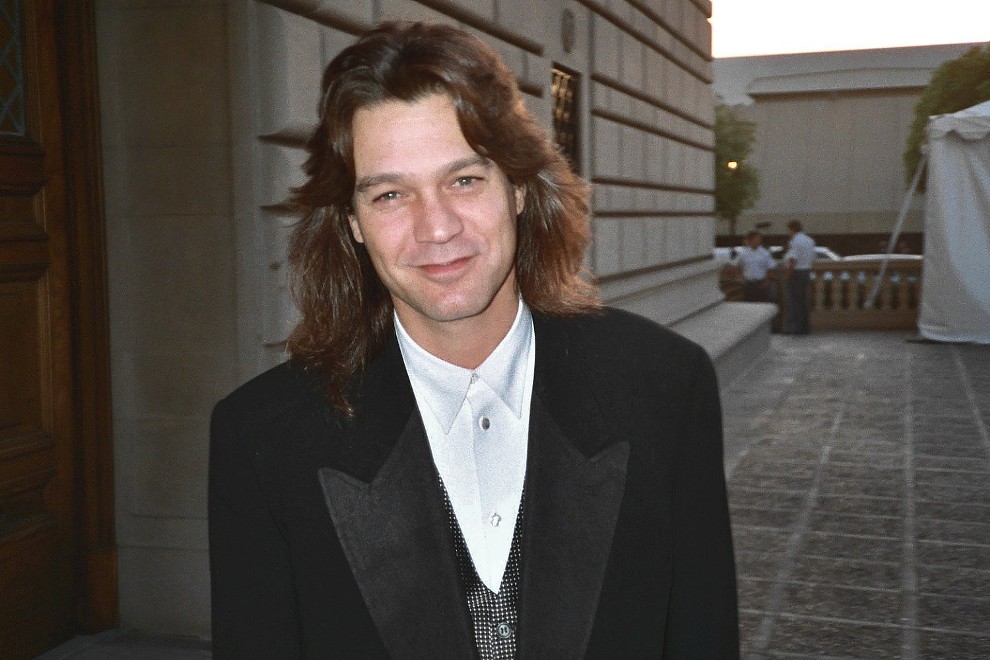
How to Win Fans and Influence Guitar Players, Principle #2: Smile.
(photo courtesy of Alan Light on flickr.)
The Million Dollar Smile
Did you notice how often Eddie Van Halen, while playing the guitar like so few people could, was almost always wearing his infectious, friendly smile?
Eddie’s perpetual beaming visage was a remarkably underrated facet not just of his appeal, but the band’s appeal. The ever present grin on his boyishly handsome face was so likable.
Of course, why wouldn’t he be smiling? He was living the dream as a wealthy, universally admired rock star, married to the gorgeous actress wife. But given all of that, the smile seemed to suggest that he was never full of himself…as he certainly could have been given the hero worship heaped on him. Even during the band’s peak, he didn’t badmouth people, he never seemed excessively brash, he praised musicians that he felt were better than he was, and he ultimately just loved to make music.
In interviews, he almost always came across as a friendly, humble guy…and infinitely more gracious than his brazen, cocky lead singer bandmate. In a way, it made him and Roth great foils for each other…if you found Dave obnoxious, you had this outstanding guitar player and affable fellow that you could pay attention to instead.
Most of us probably think we’d be smiling all the time if we were living his life too. But ask yourself how many celebrities…not just musical stars, but actors and actresses, athletes, and others…always wear a smile on their face, and always seem as friendly and humble as can be in interviews? You could easily think of a couple dozen celebrities who become more known for their political stances than anything they’ve accomplished on a stage or playing field. It’s a whole lot harder to think of a wealthy and famous celebrity who simply loves what they get to do for a living and acts like it.
Eddie wasn’t always a perfect gentleman, as we all know. He succumbed to the booze and partying lifestyle enough to cost him his marriage and probably quite a few years of performing and music making. And in his later years he came across as fairly incisive towards Dave, Sammy, and Michael.
But on a behavior level, plenty of rock stars have done worse, and ultimately the onstage smile seemed and probably was genuine, the smile of a guy who loved to play music and loved being a rock star.
To musicians who would like to become more famous: smile more. Especially when you’re playing. Make that your Eddie Van Halen influence, not the tapping technique.
A Gift For Someone You’ve Never Met
Other than Bill Bruford, Howard Jones and Allan Holdsworth, I can’t think of many of my musical heroes that I’ve met in person. I sadly never met Neil Peart or Eddie Van Halen.
That I never met either of two of my all-time favorite musicians didn’t stop me from being more than a little emotional at their departure from this world in 2020. You always feel like you know your celebrity heroes on some level, even though you really, really don’t…and would probably be disappointed at who they really are.
With both Eddie and Neil, I don’t think about losing the man. I thought about the gift they gave all of us while they were here.
The day I learned of Eddie’s passing, I drove home from work playing a thumb drive full of Van Halen music. In a random shuffle, as “Good Enough”, “In ‘N’ Out”, “Fools”, and “Spanish Fly” and other VH greats played, I realized how huge a part of our lives the music we love is. I remembered the periods of my life when those songs were new. I smiled at how I still loved so many Van Halen songs, and how I could still verbalize the guitar sounds, three whole decades later.
When an artist who created so much music that you loved is gone, a part of you is, too.
Edward Van Halen spent thousands of hours of his time on this planet practicing, composing, producing, performing, and generously giving the gift of his music, to millions of people throughout the world that he never met. And almost always with a warm, genuine smile on his face.
As saddened as I was riding home that day, I counted myself among the fortunate and grateful.
Farewell Eddie, and thank you.
Did this post make your day a little bit?
I hope so. If it did, I would really appreciate your support.
When you use this link to shop on Amazon, you’ll help subsidize this great website…at no extra charge to you.
Thanks very much…come back soon!
Photo credit: Joe Bielawa on Best Running / CC BY
Photo credit: Incase. on Best Running / CC BY
Photo credit: Sean Hackbarth on Best Running / CC BY
Photo credit: CLender on Best Running / CC BY
Photo credit: bandarji on Best Running / CC BY
Photo credit: Dina Regine on Best Running / CC BY-SA
Photo credit: kris.layon on Best Running / CC BY
Photo credit: KRISTY FOX on Best Running / CC BY
Photo credit: ArtBrom on Best Running / CC BY-SA
Photo credit: PhilipRood.com on Best Running / CC BY-ND
Photo credit: Canadian Film Centre on Best Running / CC BY
Photo credit: Walt Disney Television on Best Running / CC BY-ND
Note: this article contains affiliate links. If you make a purchase through these links, the website receives a commission at no extra cost to you. Thanks for your support.

